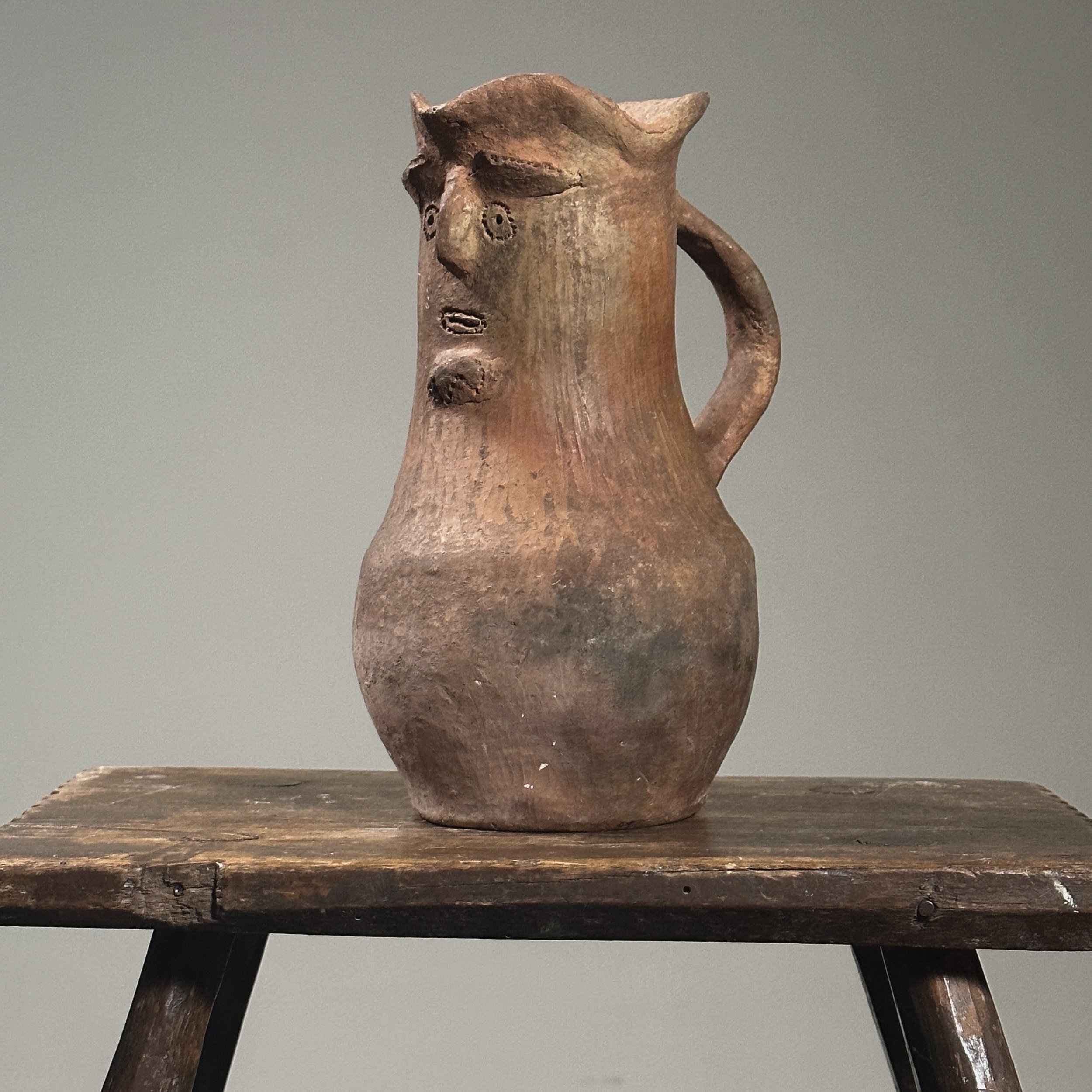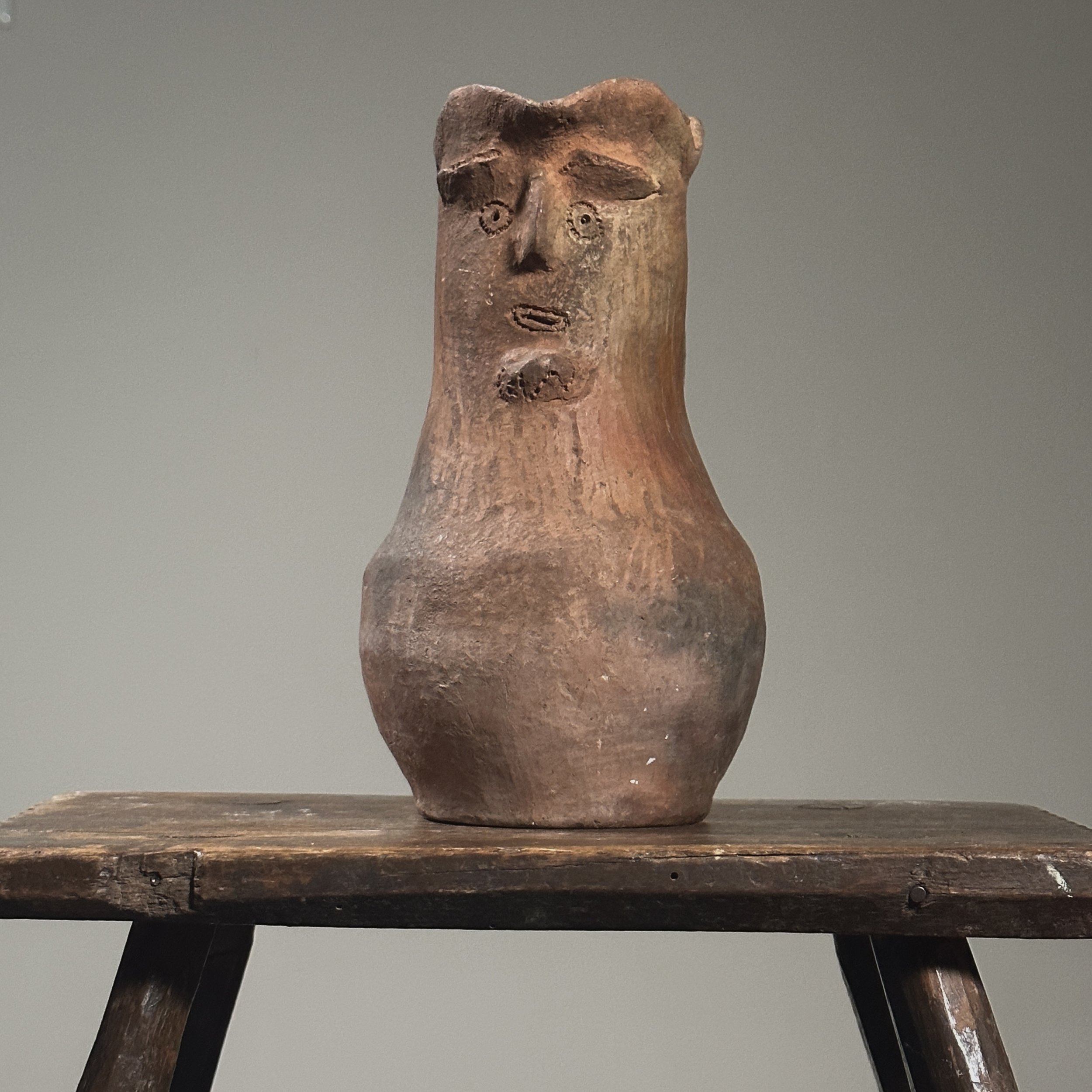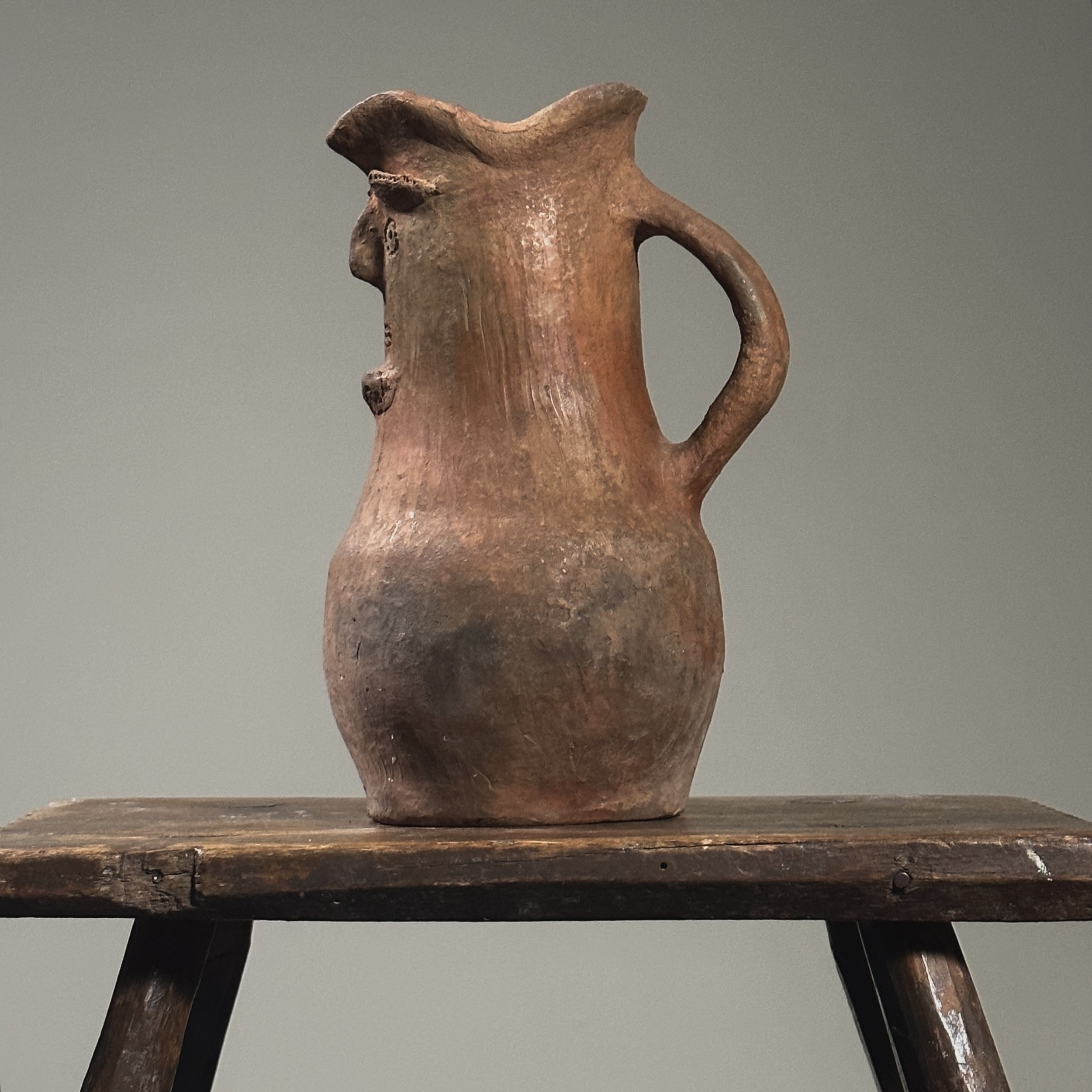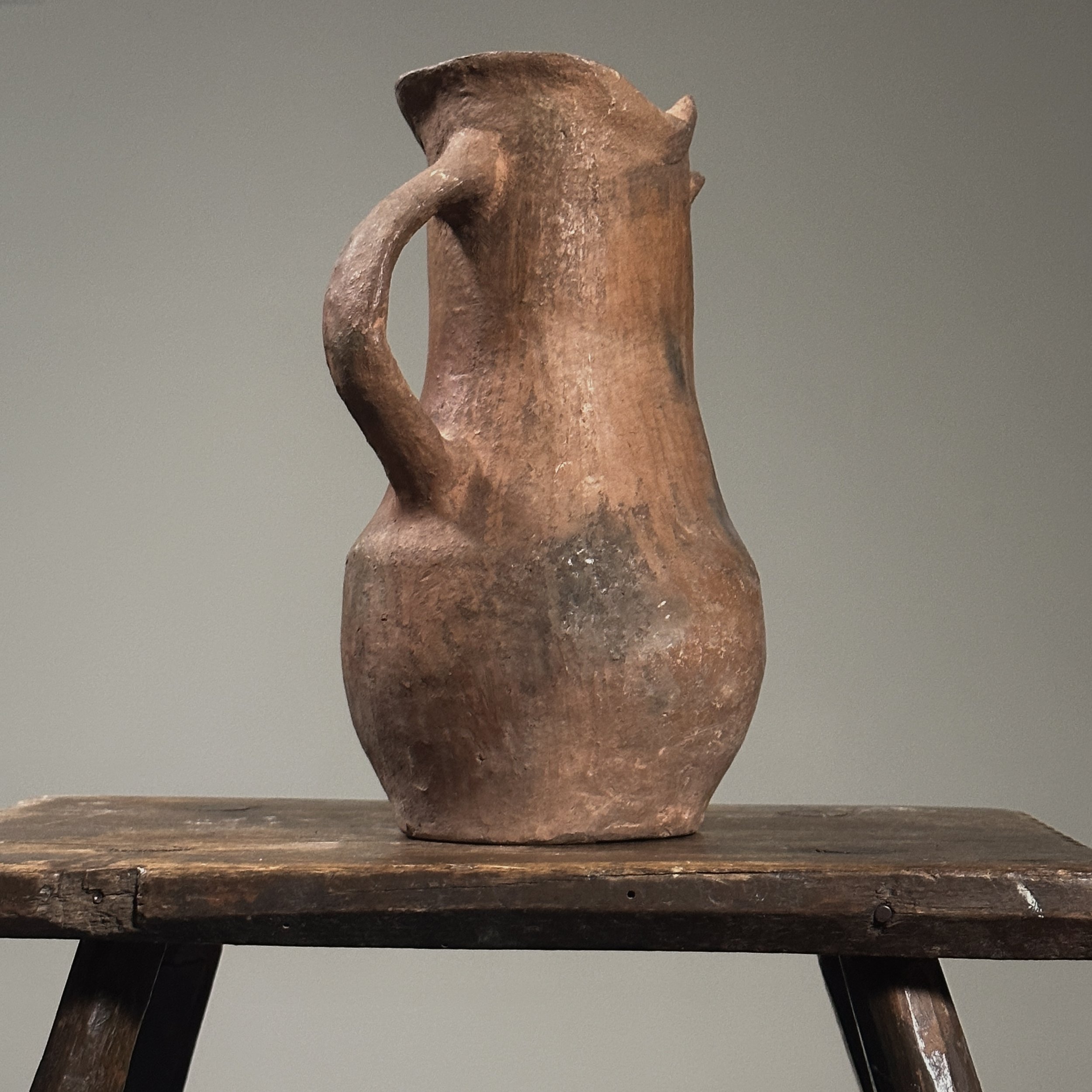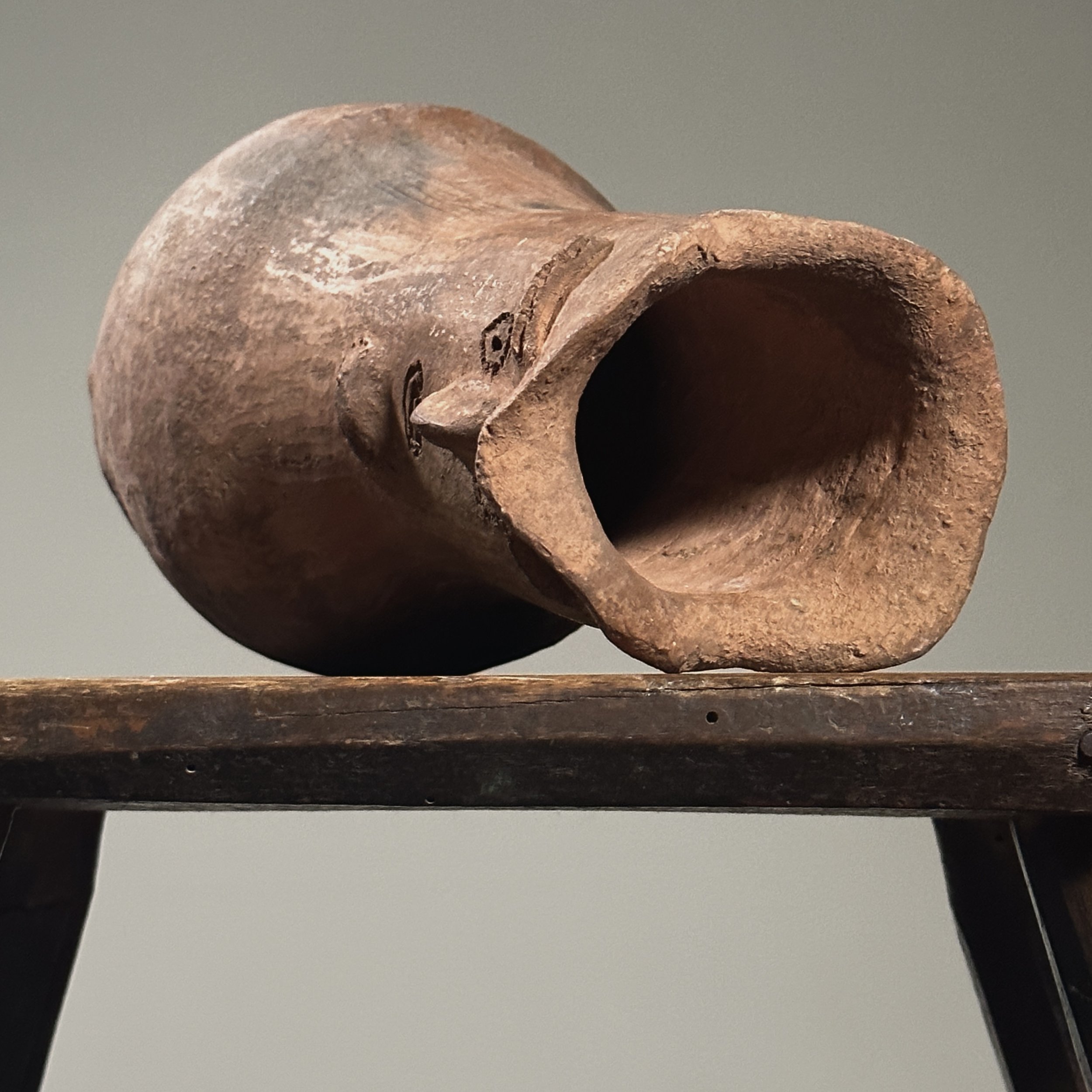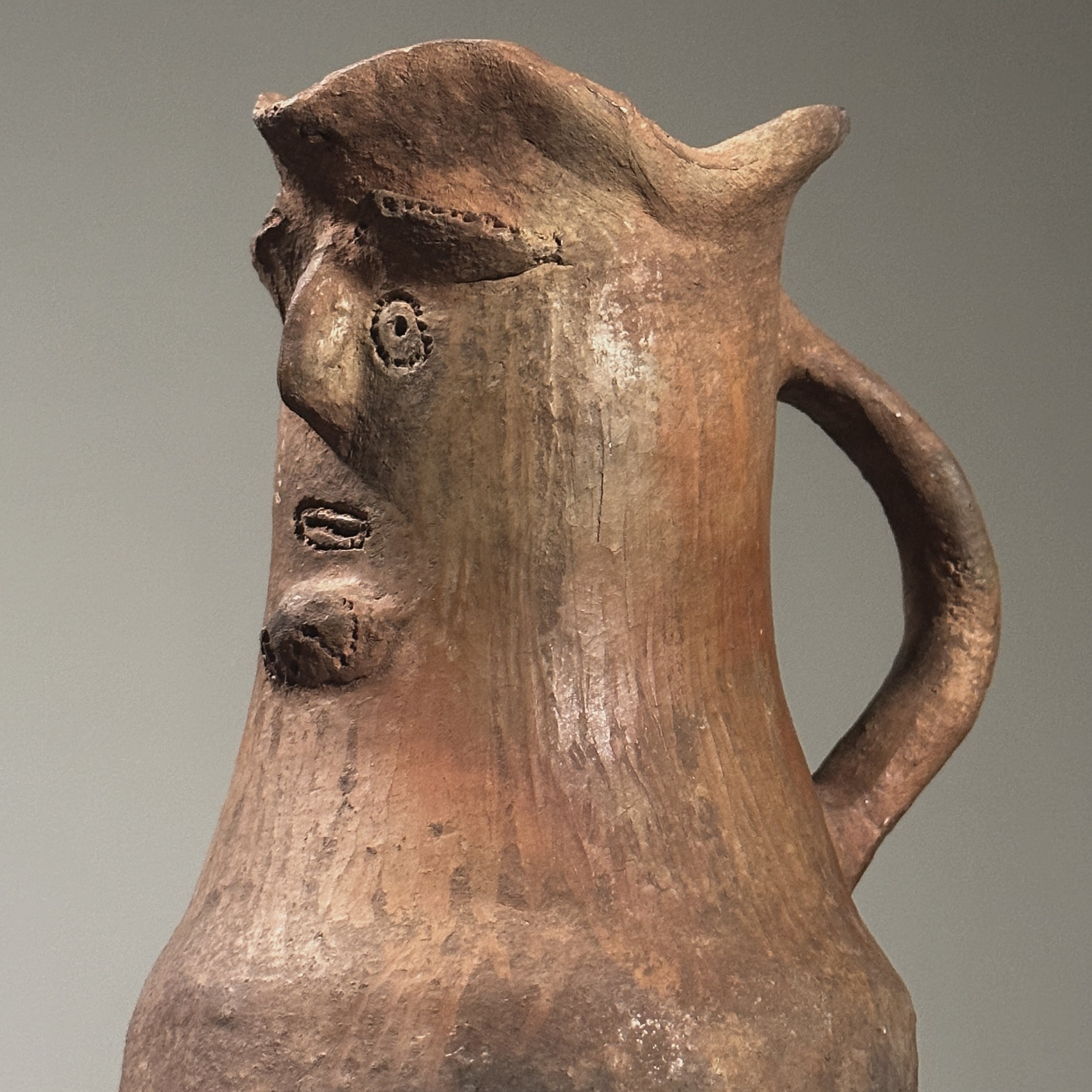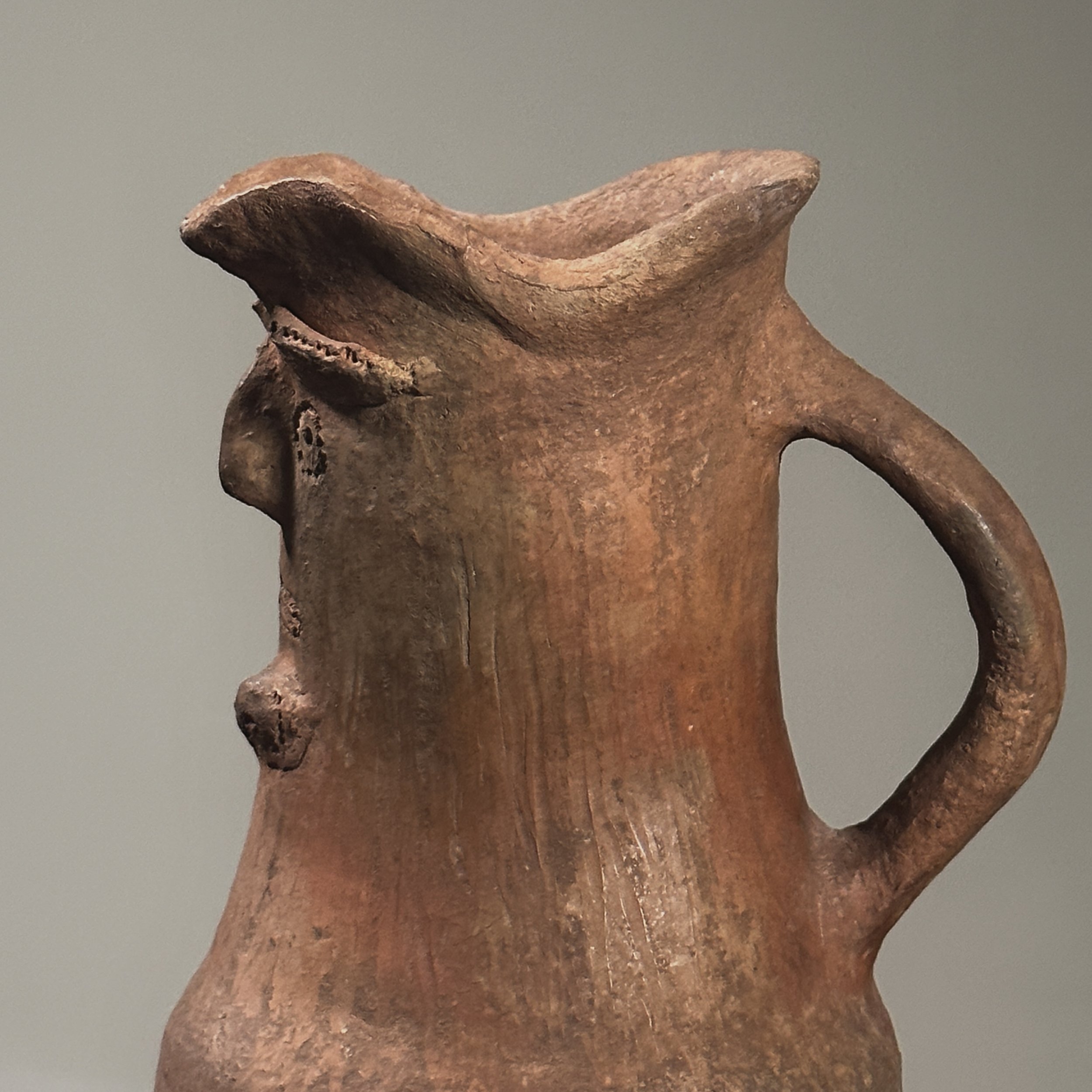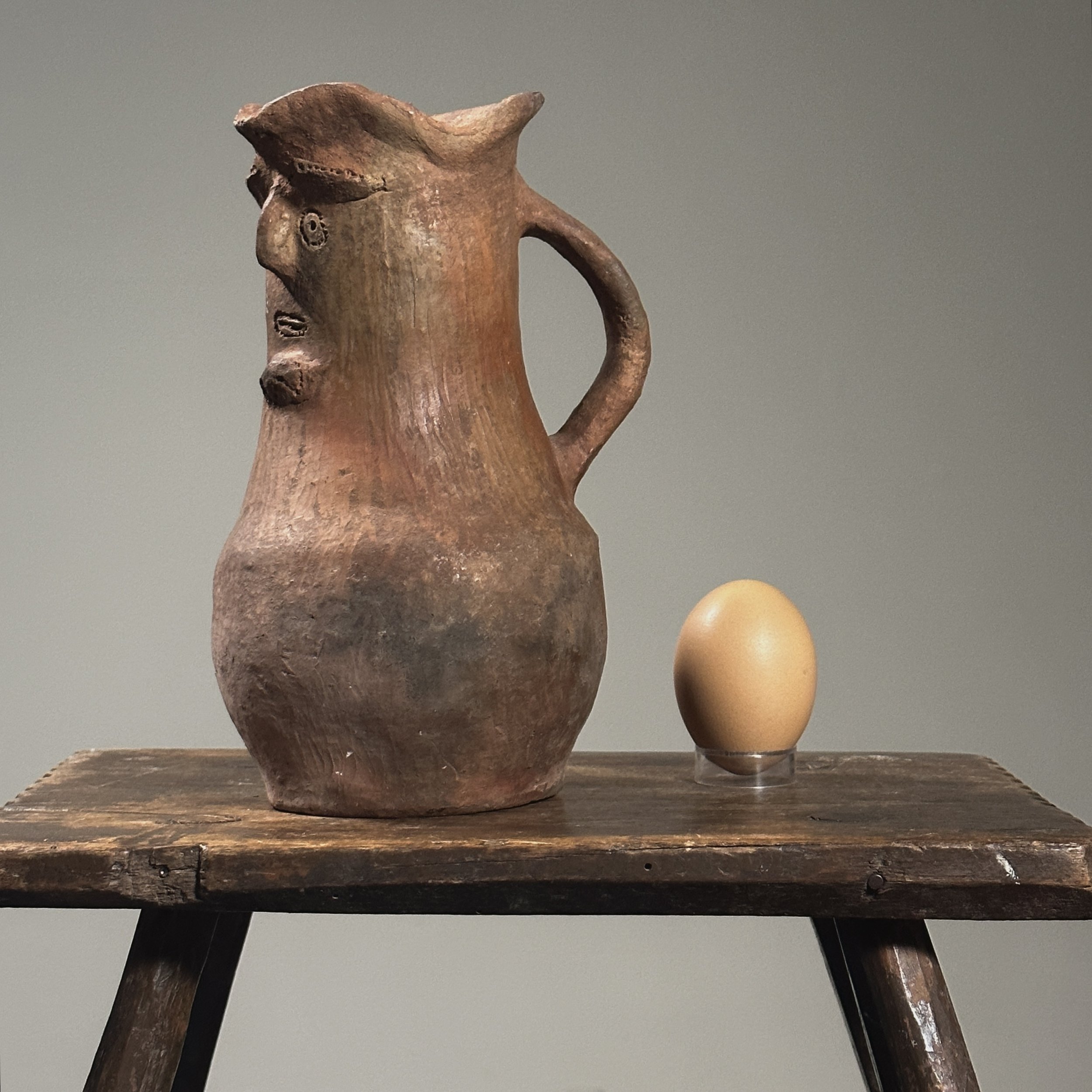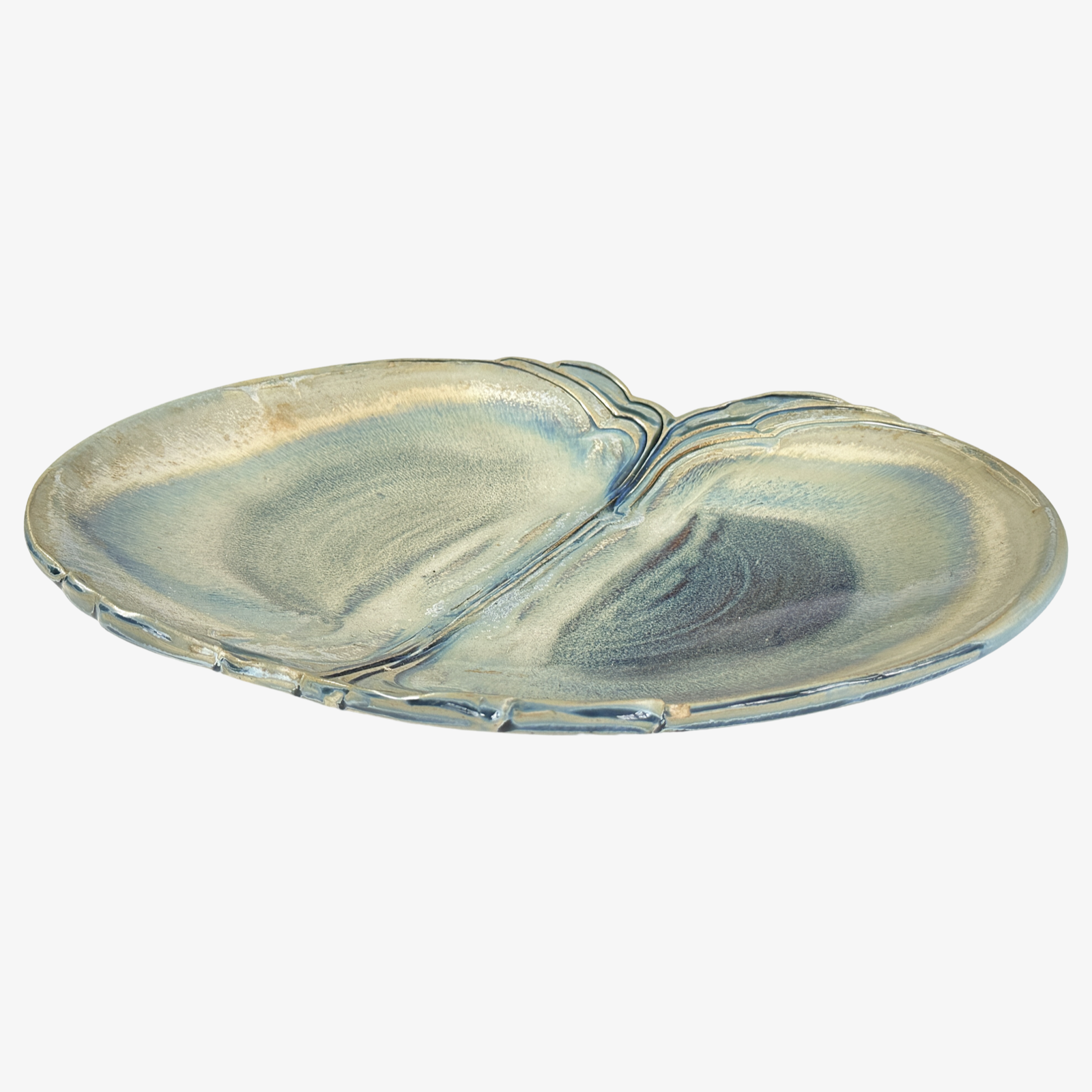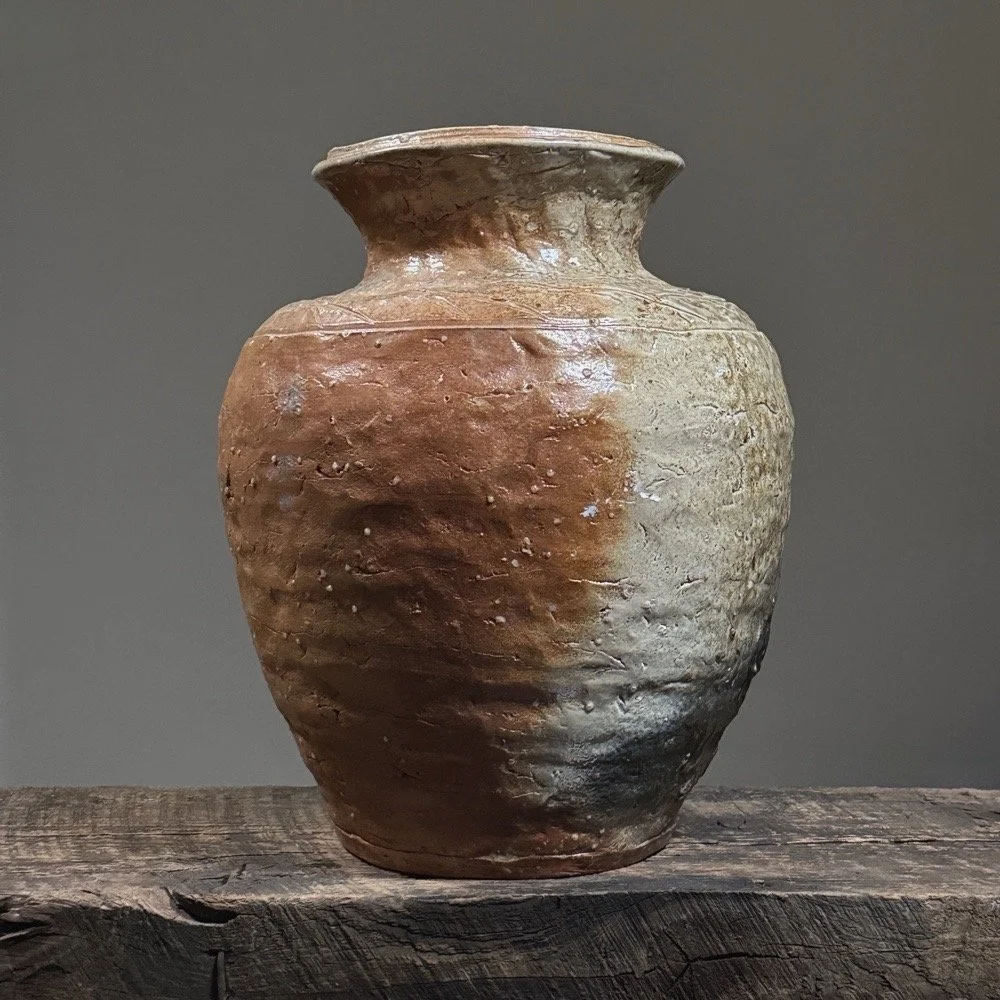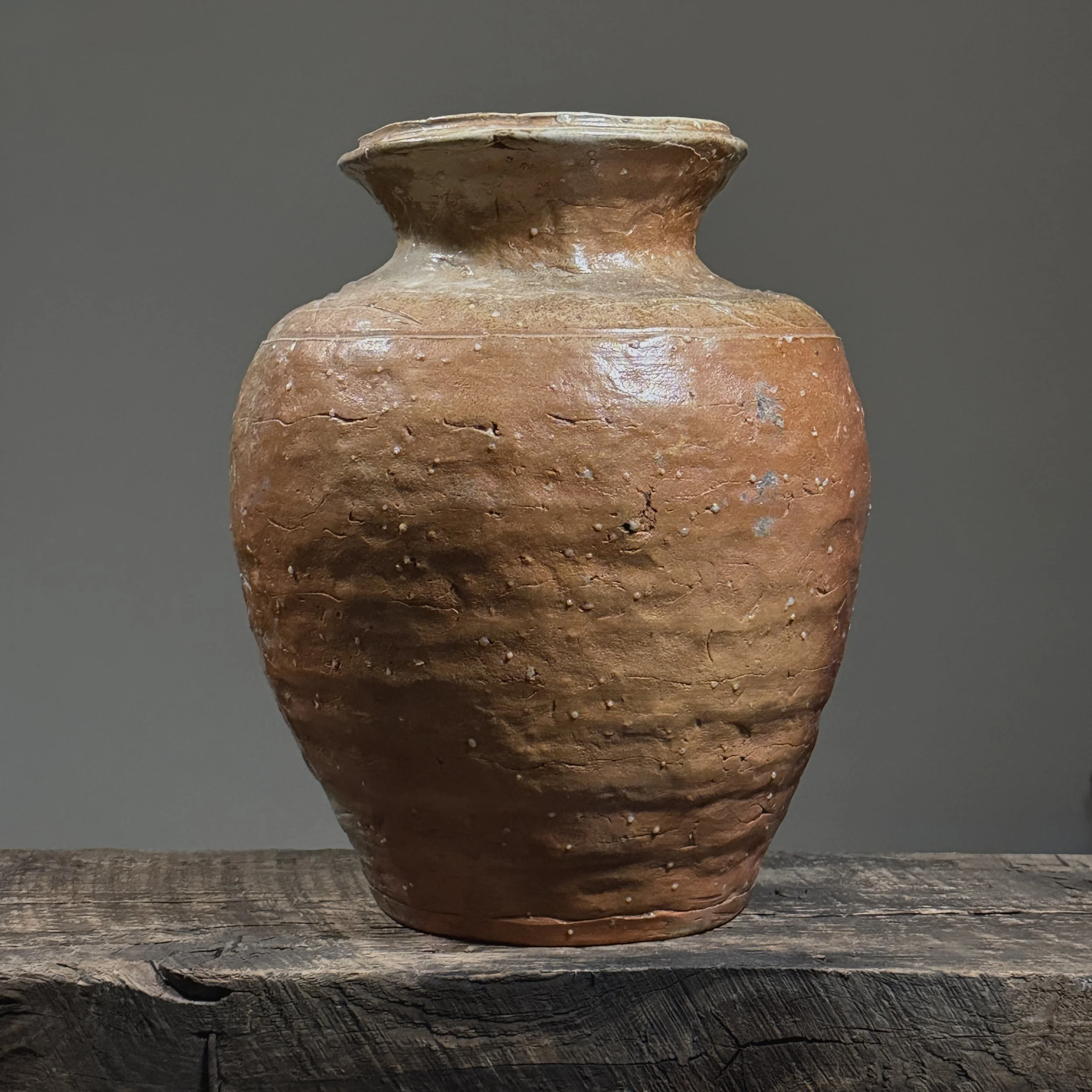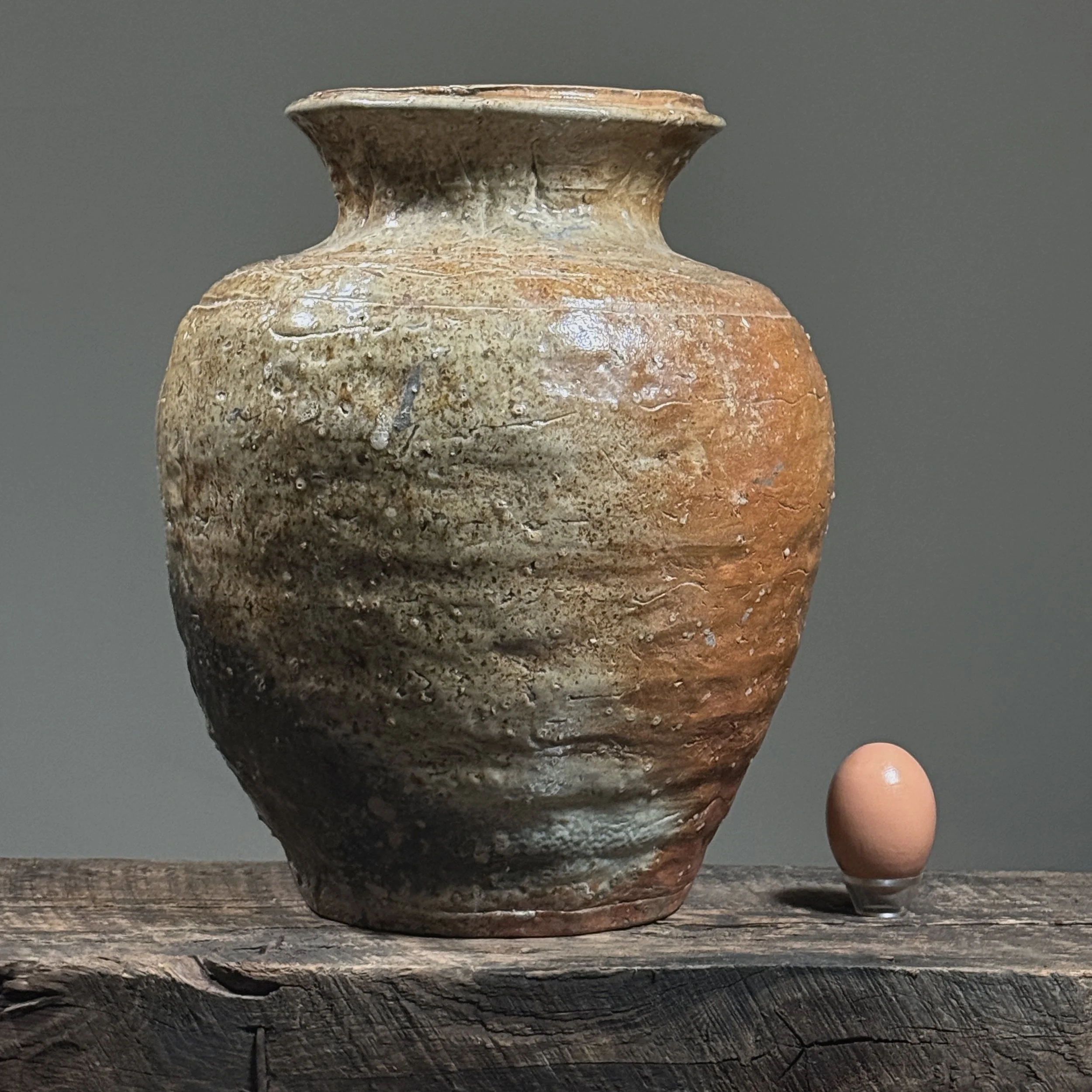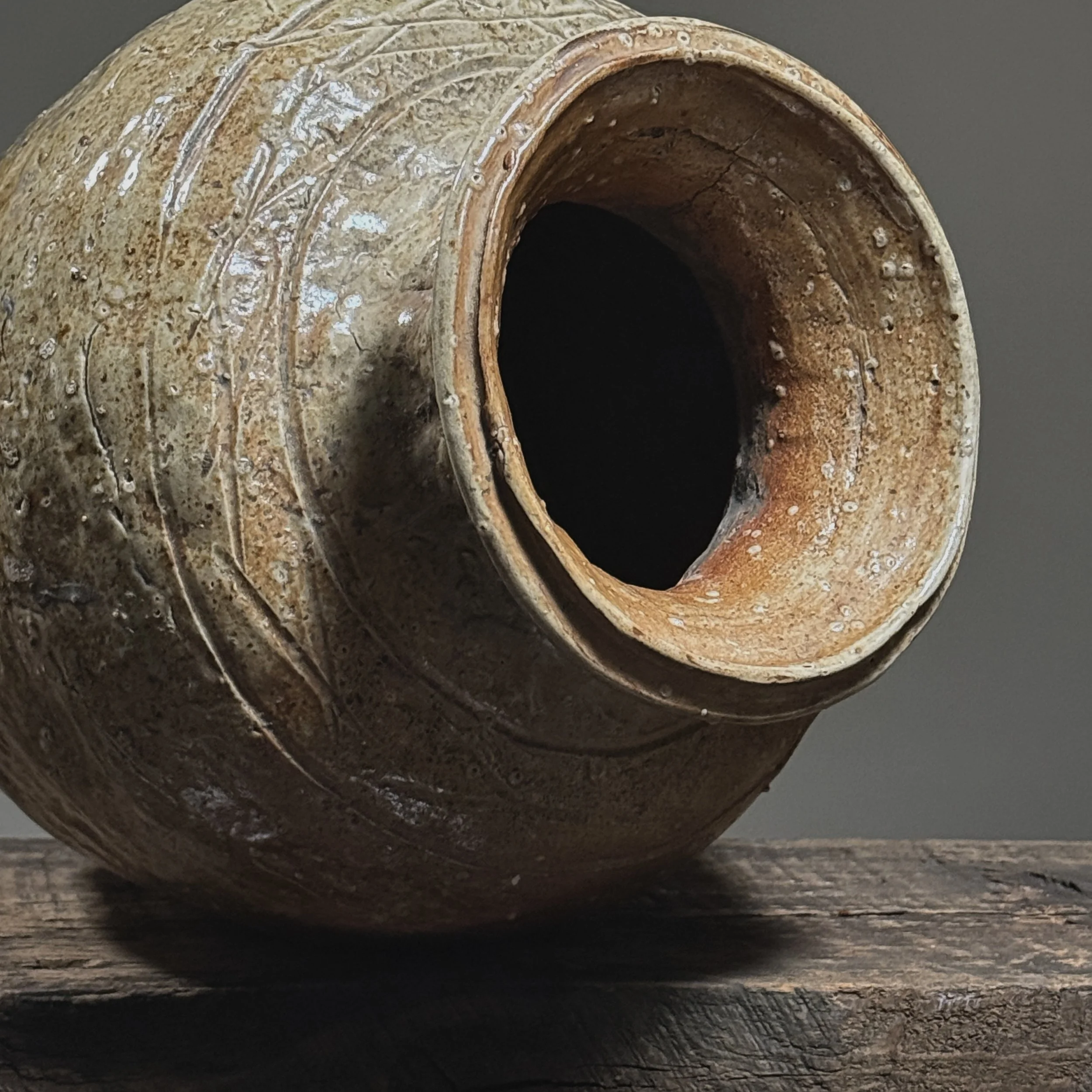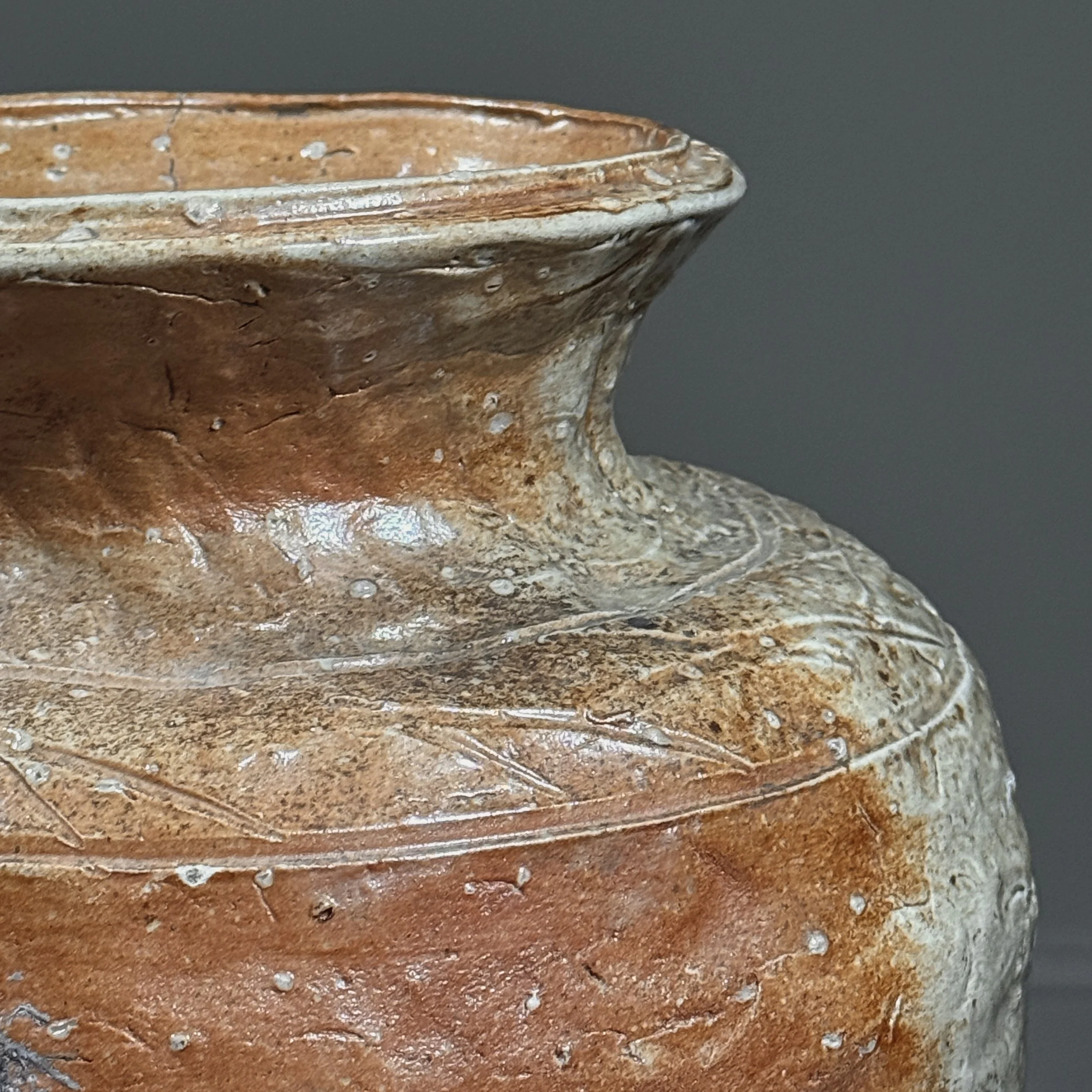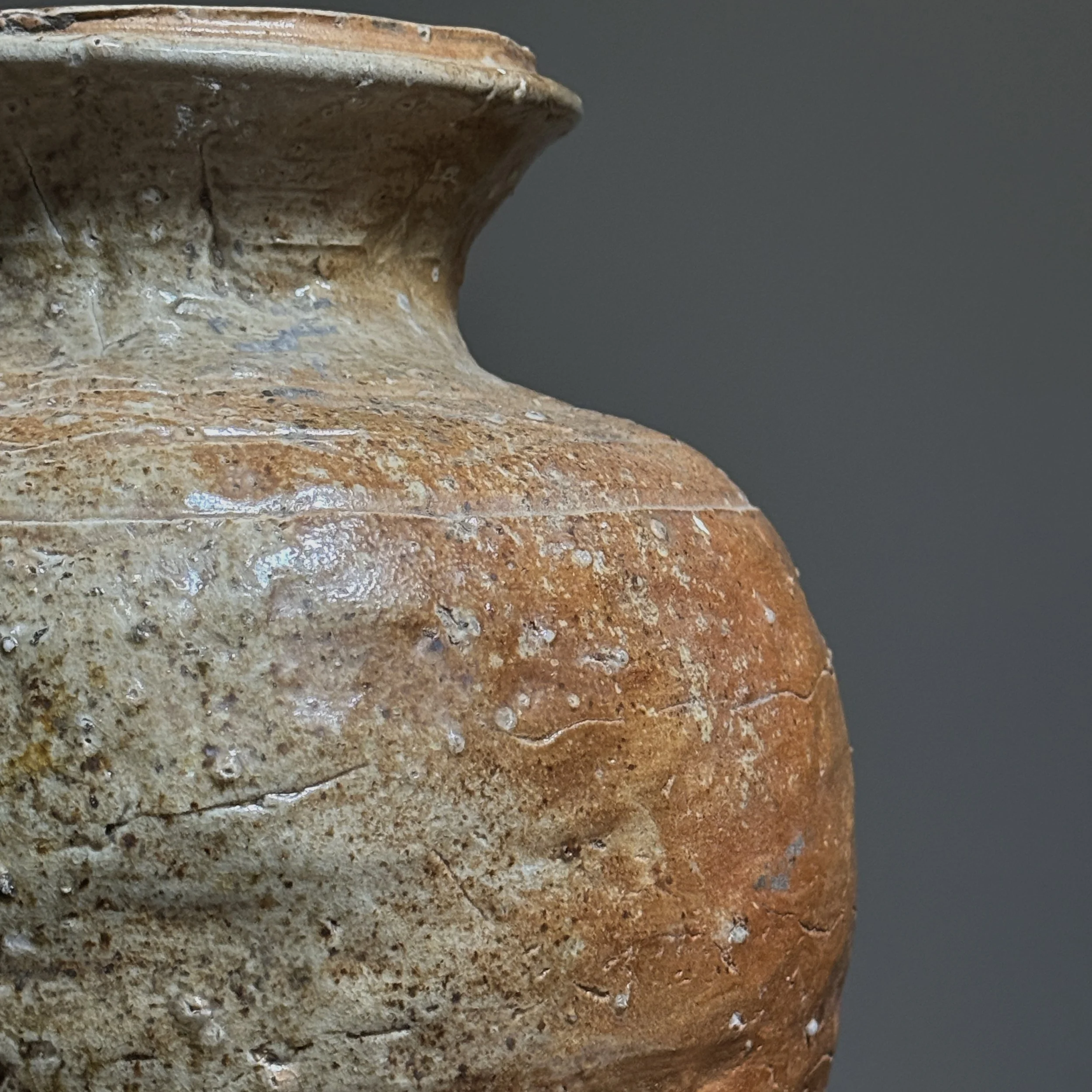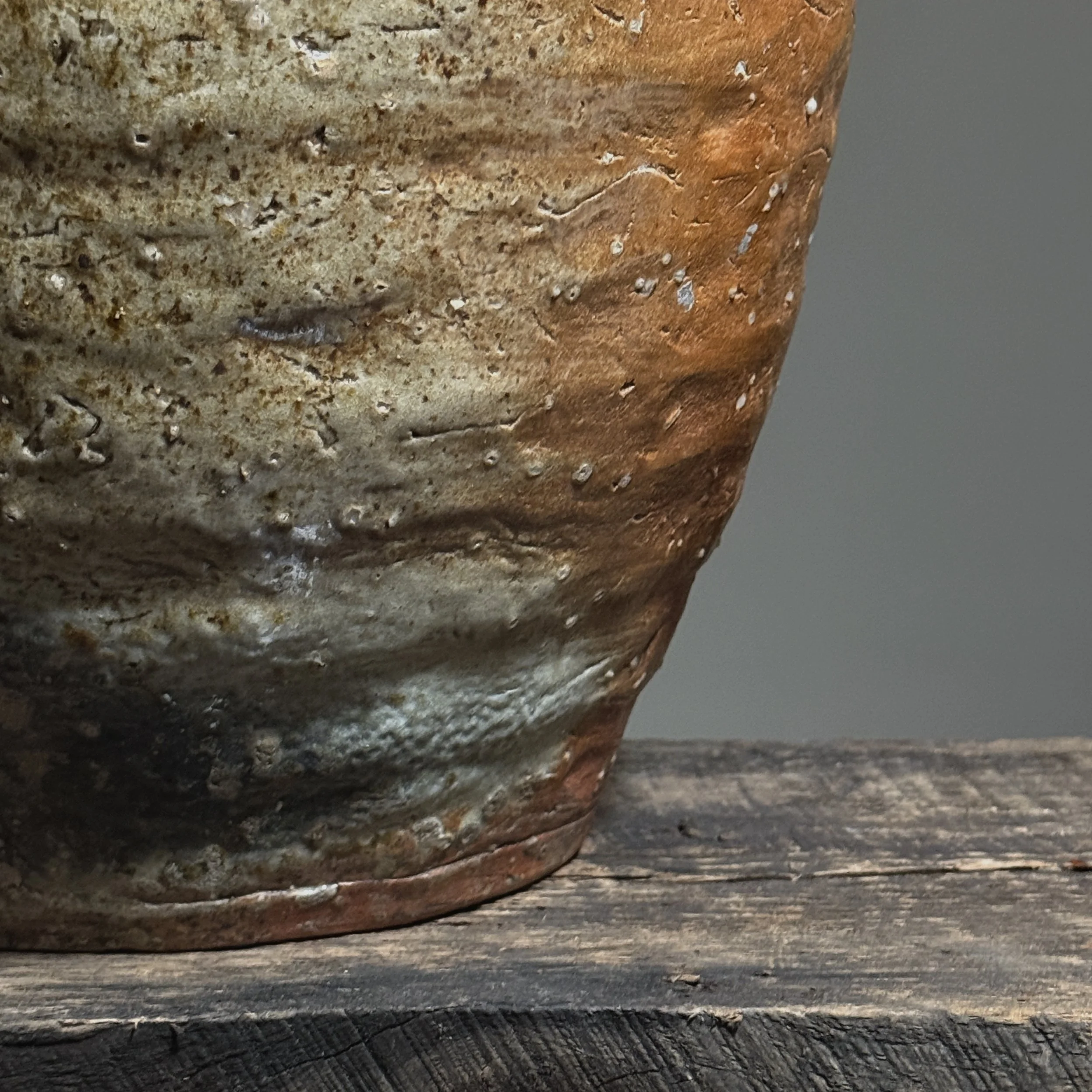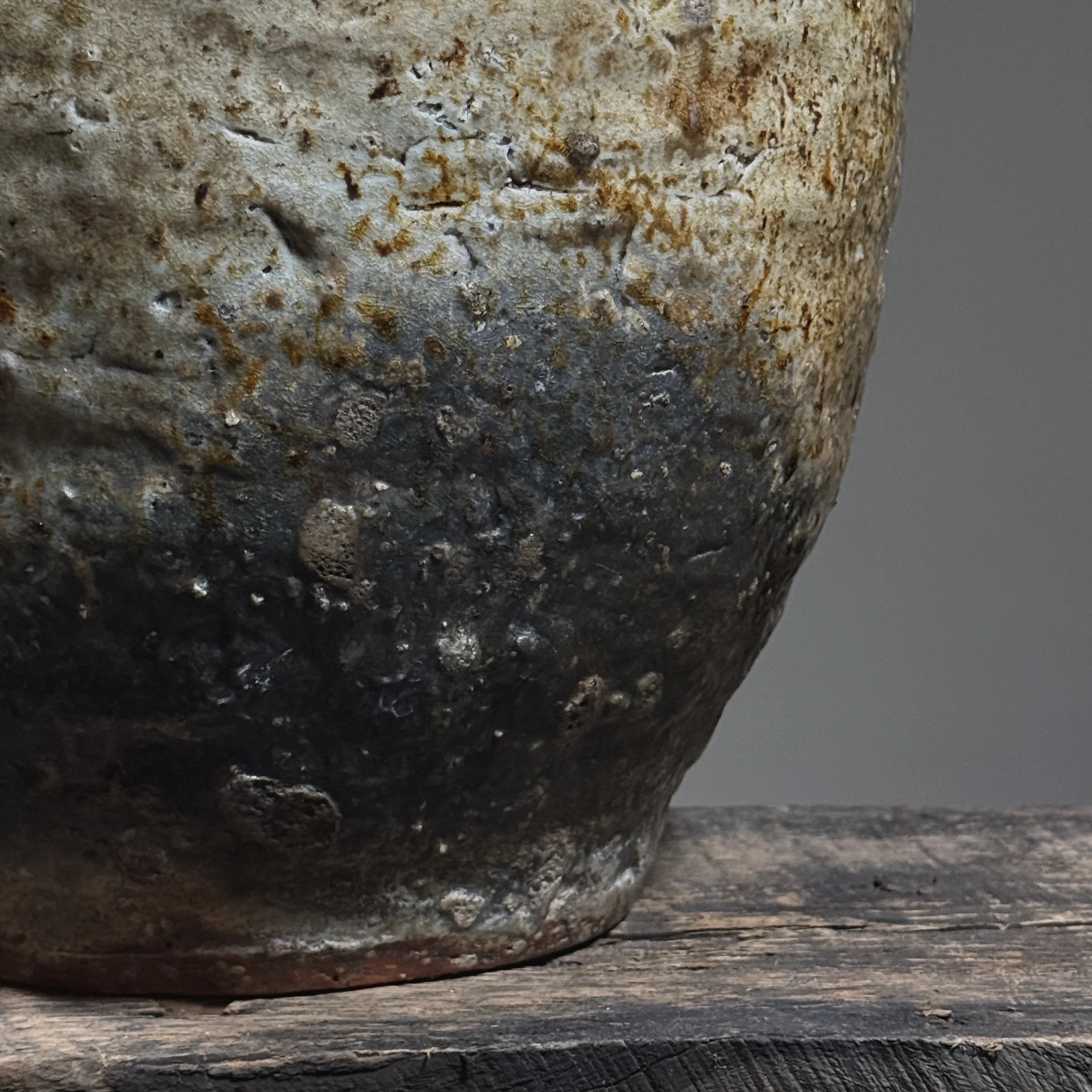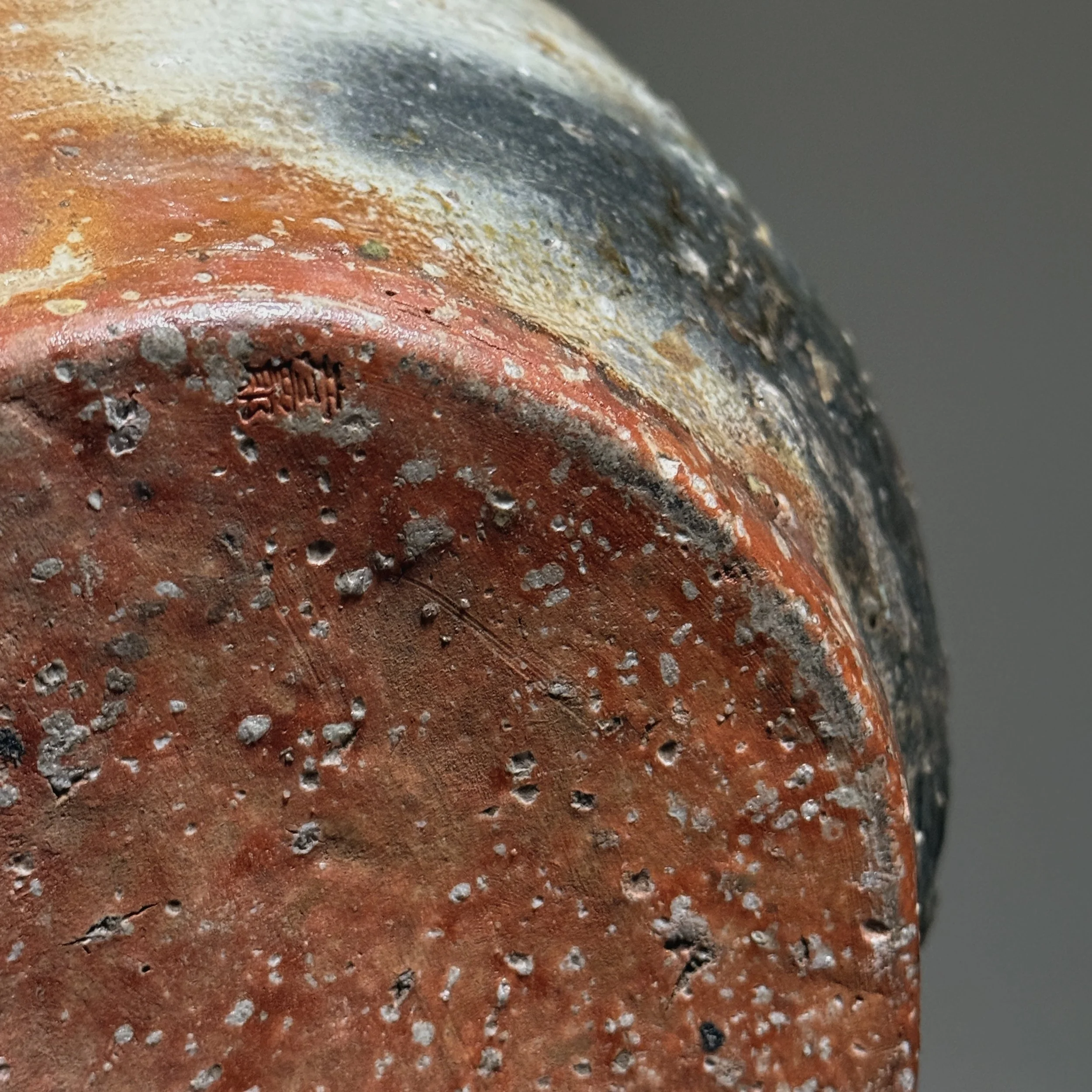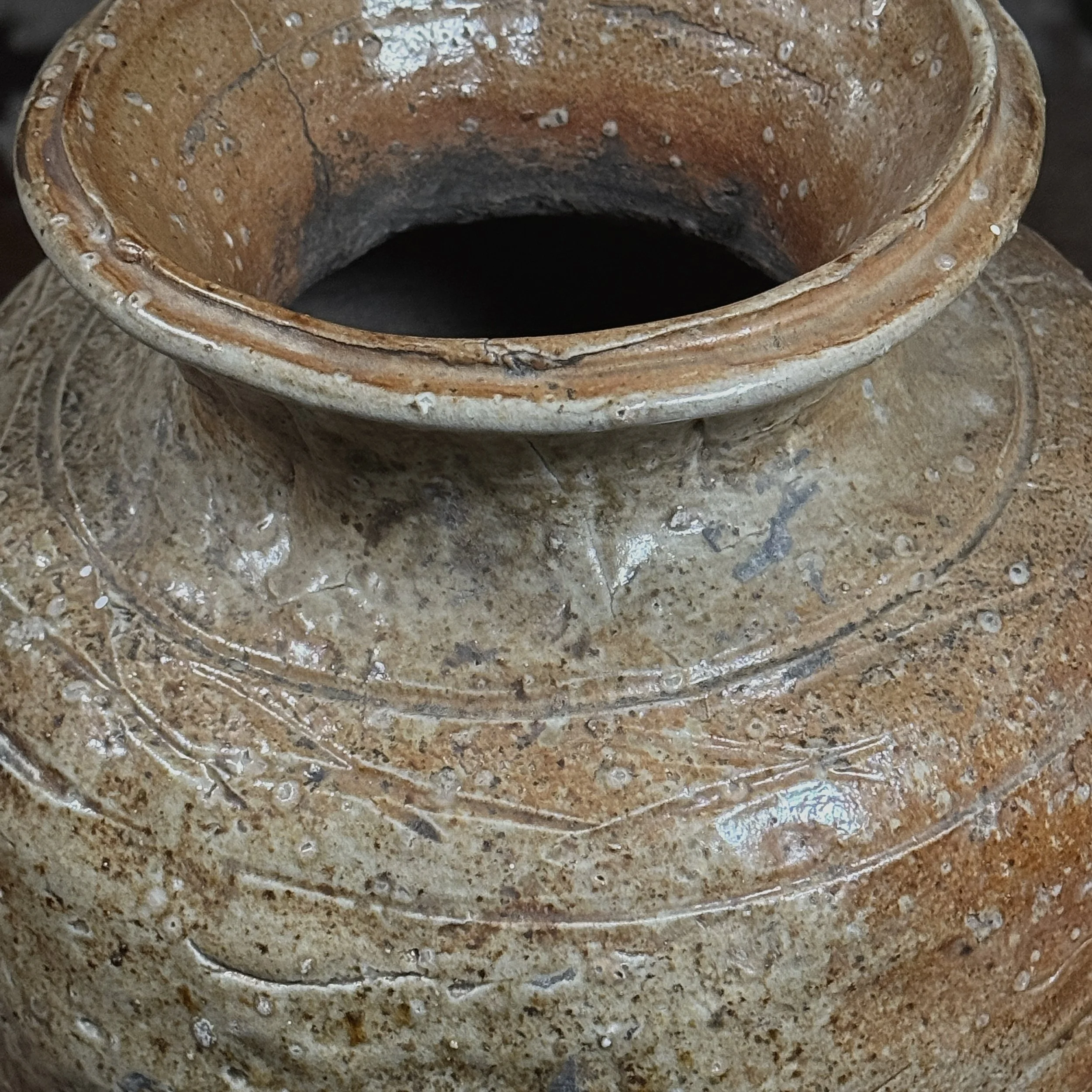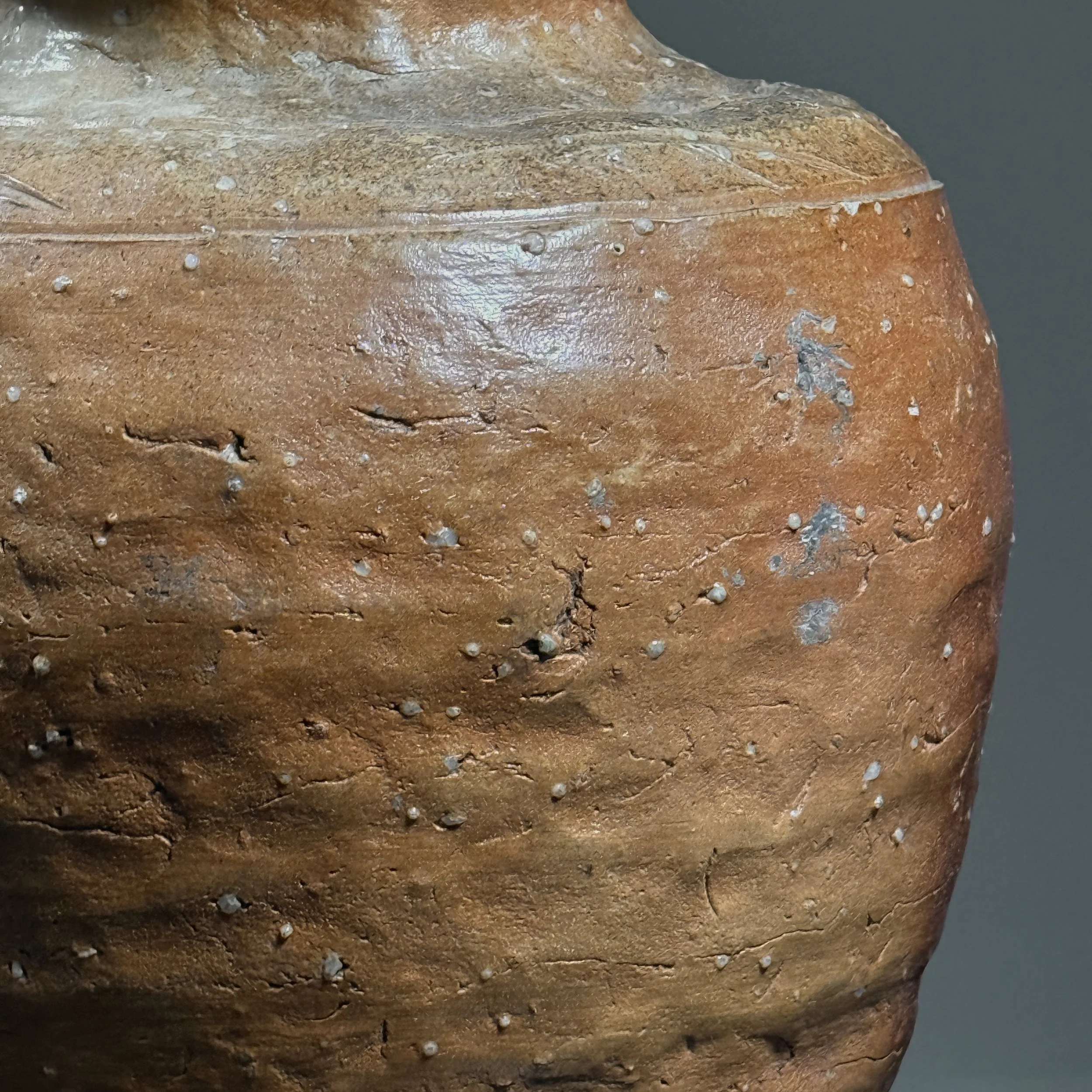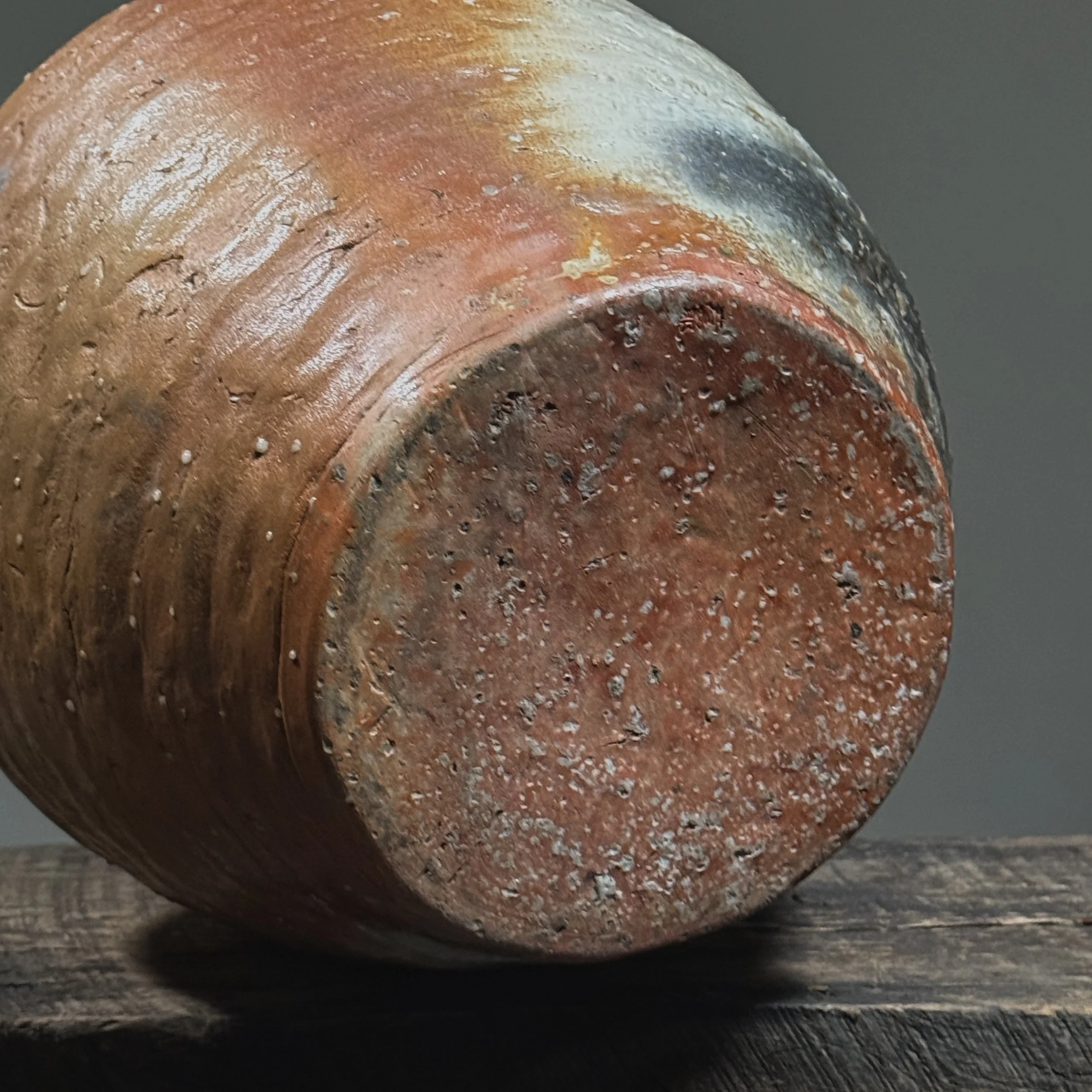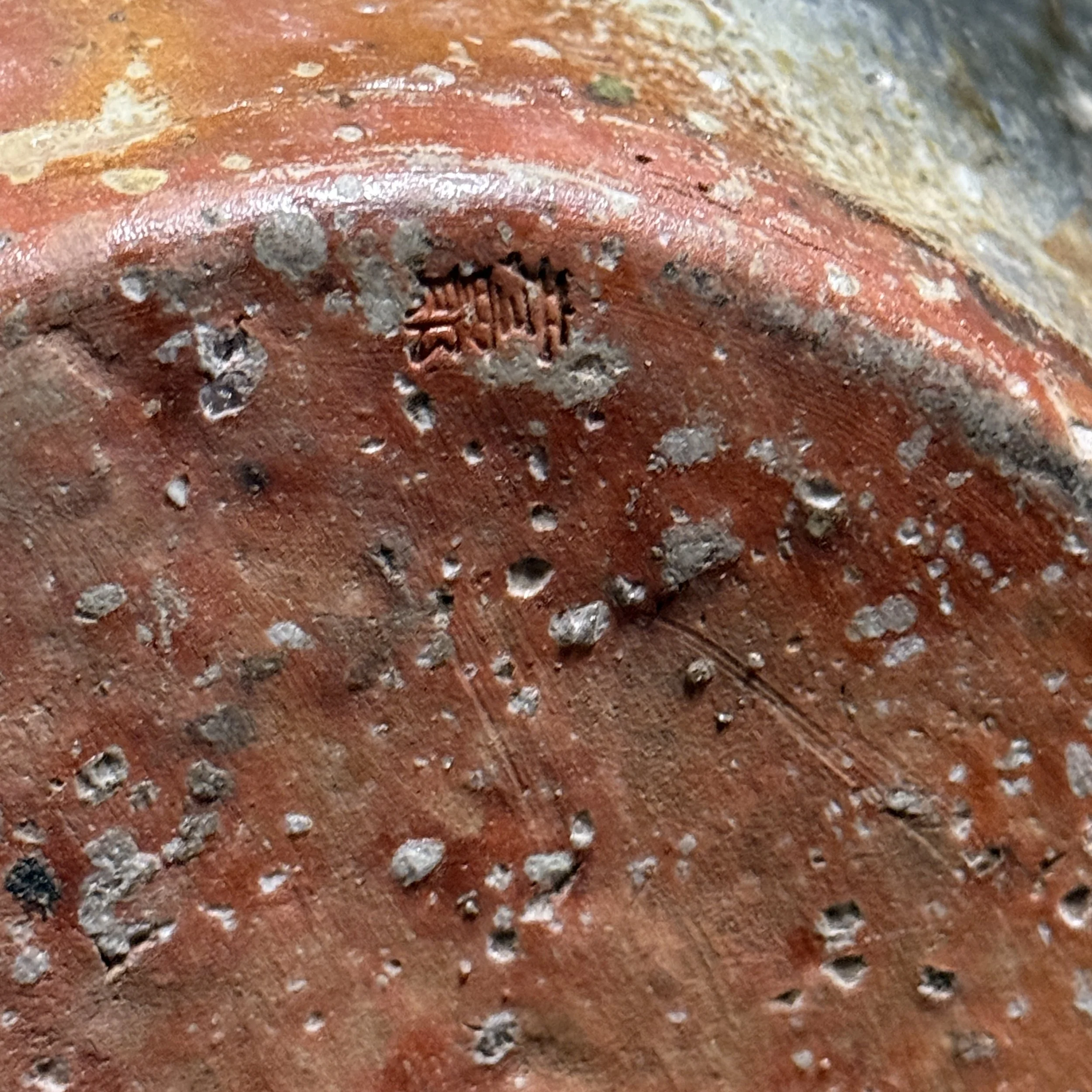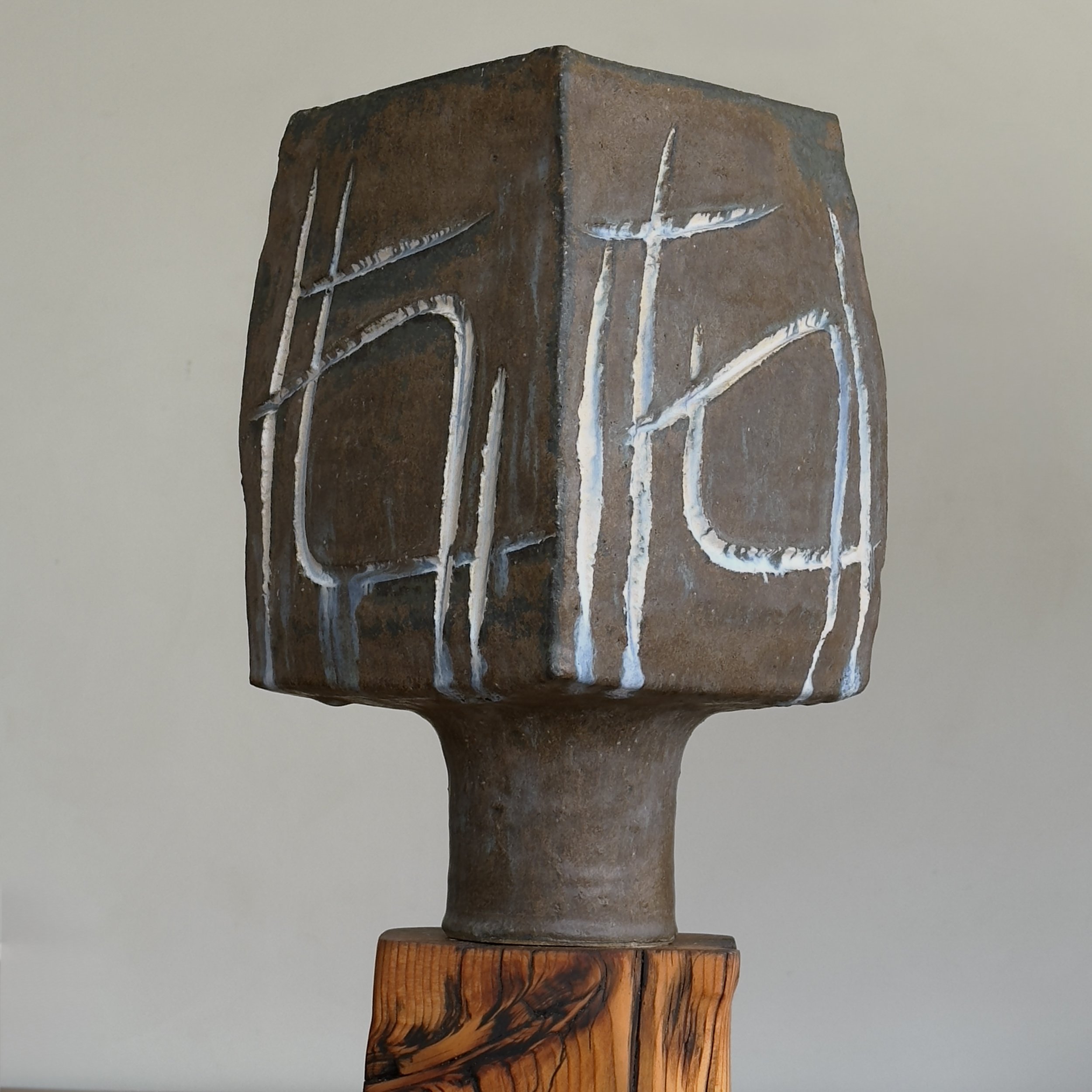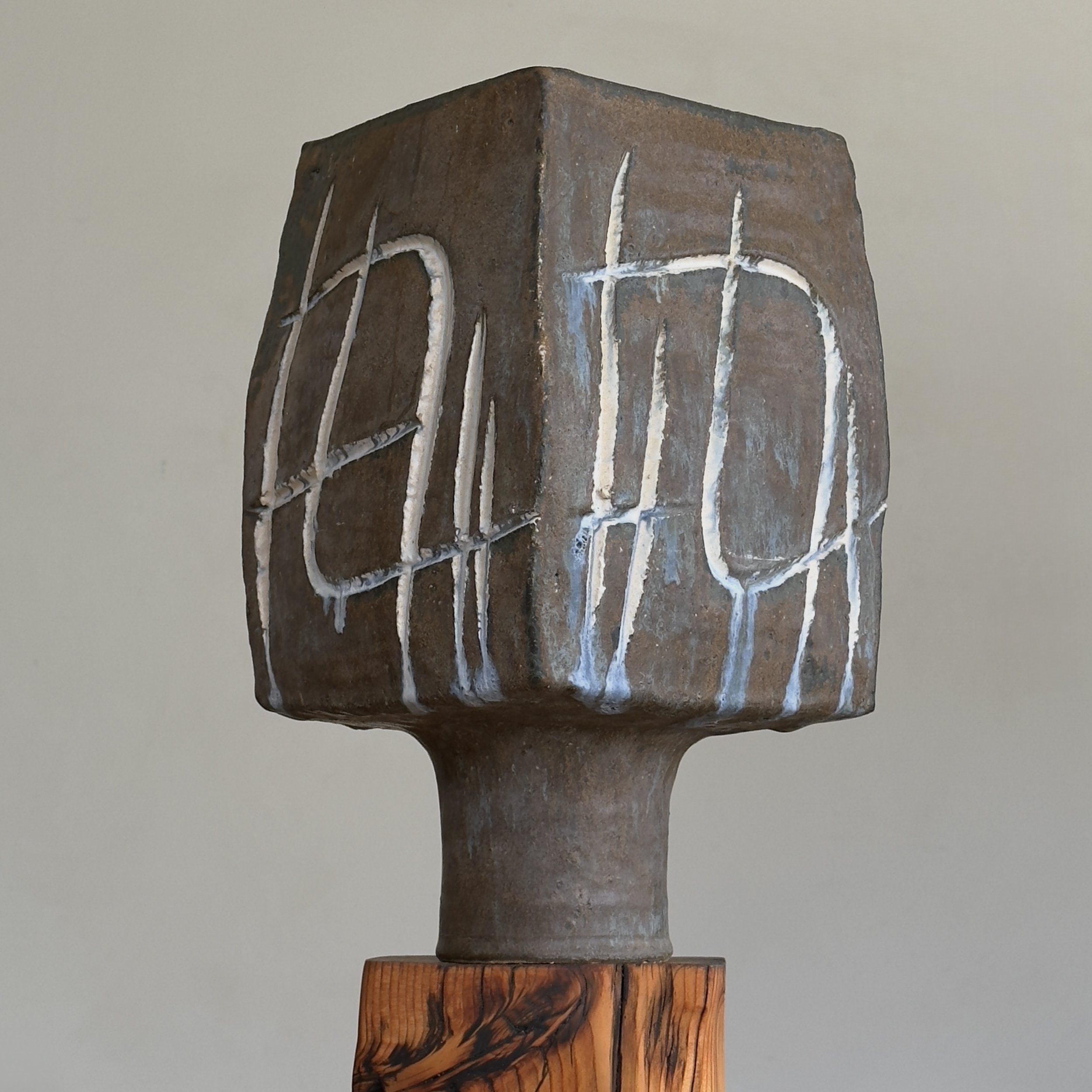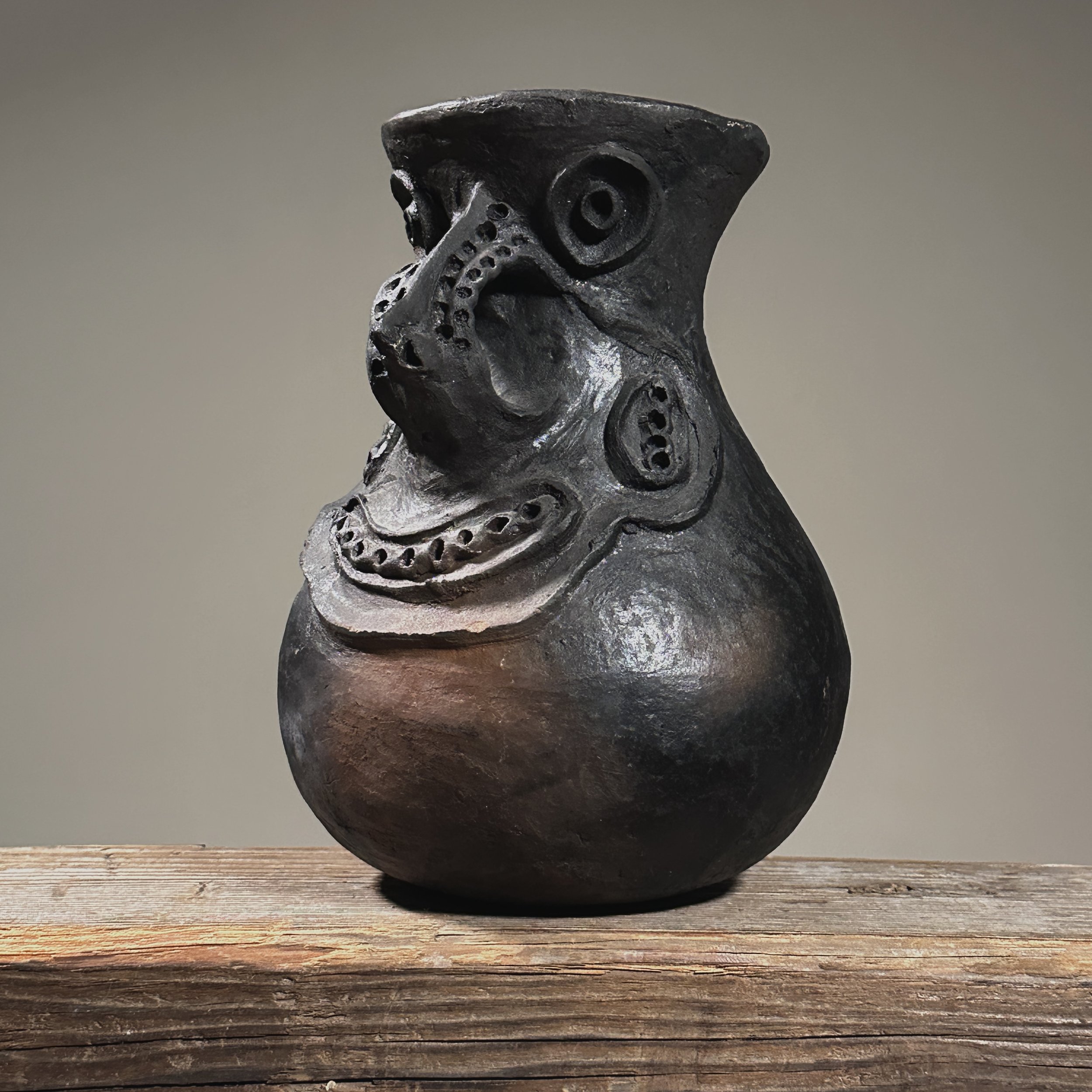 Image 1 of 8
Image 1 of 8

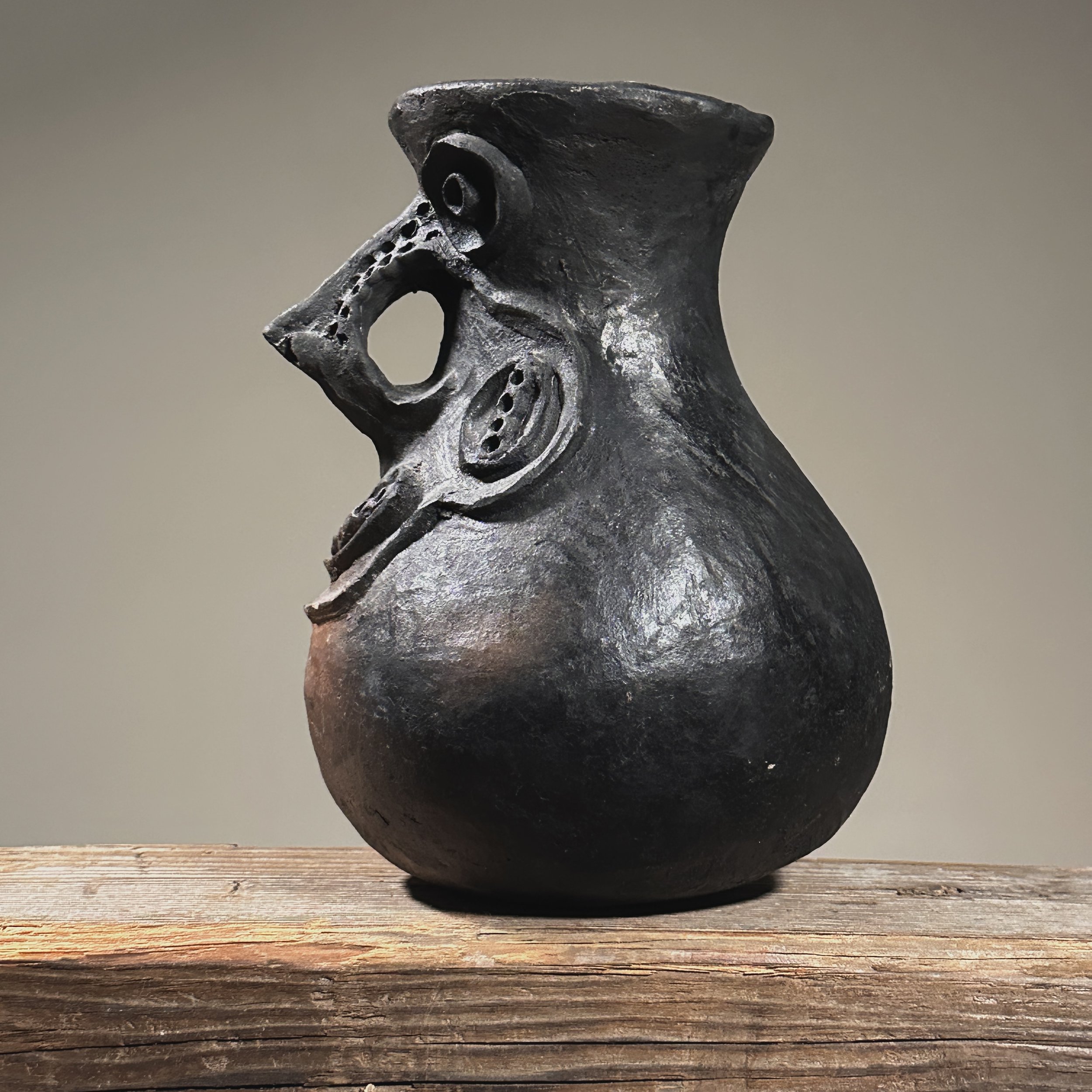 Image 2 of 8
Image 2 of 8

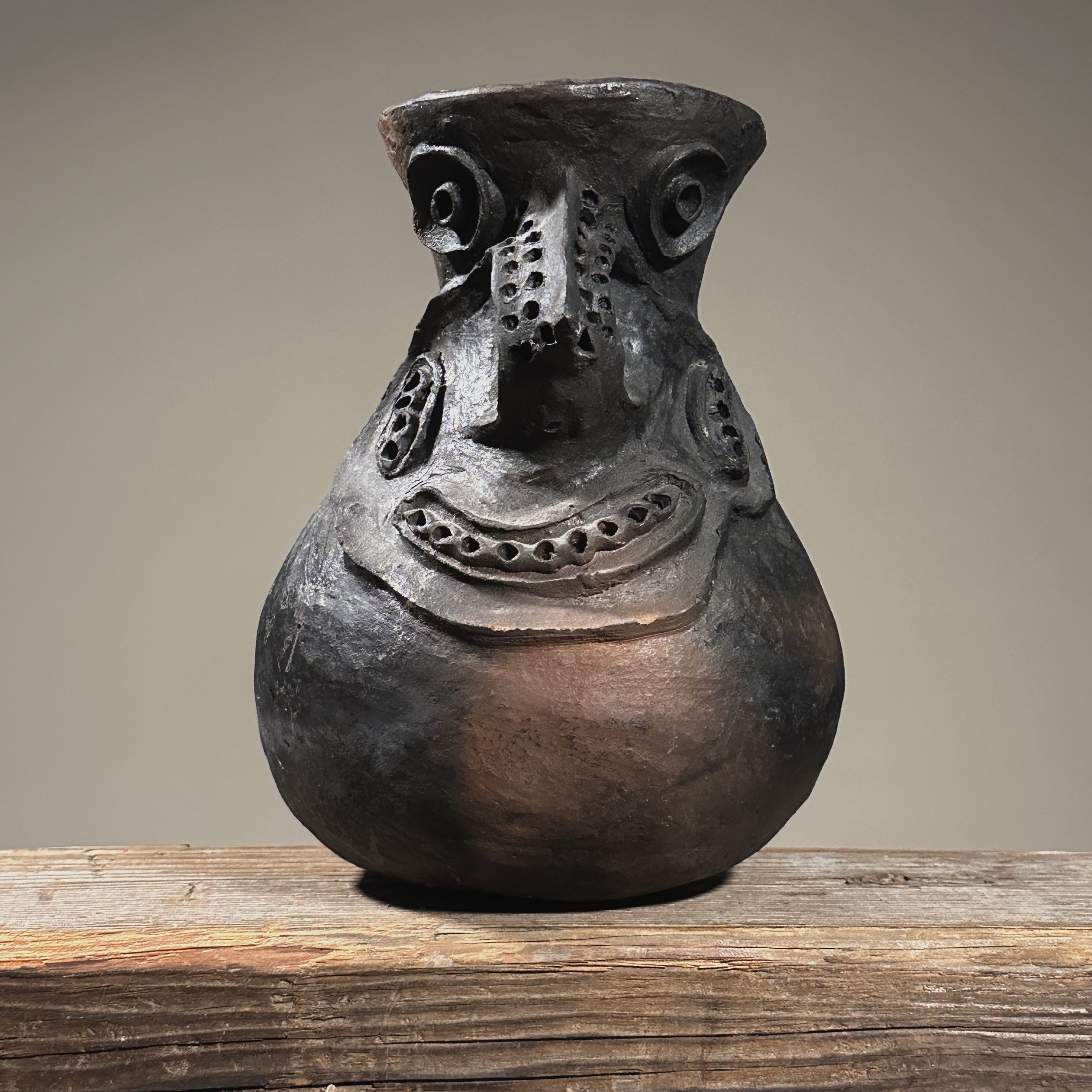 Image 3 of 8
Image 3 of 8

 Image 4 of 8
Image 4 of 8

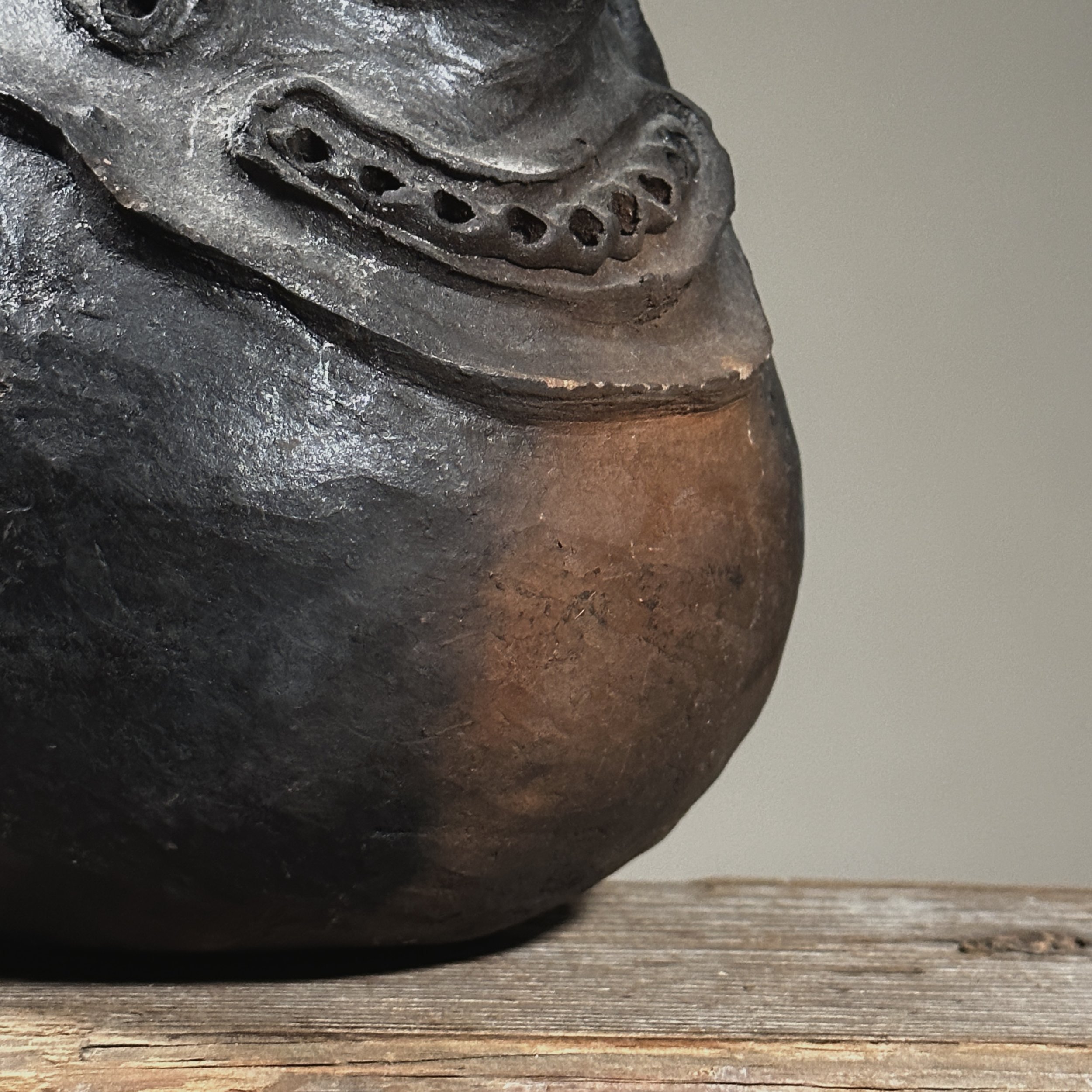 Image 5 of 8
Image 5 of 8

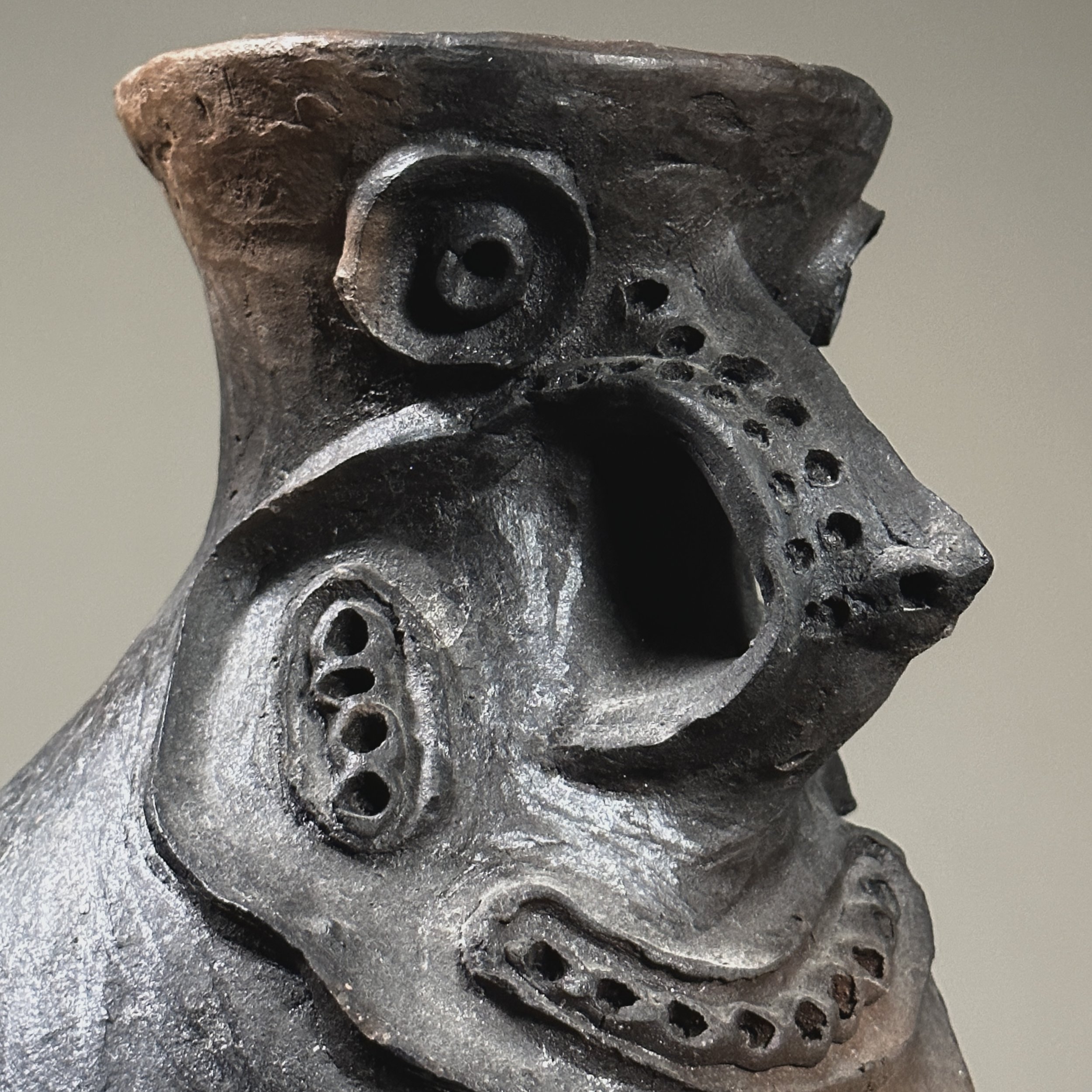 Image 6 of 8
Image 6 of 8

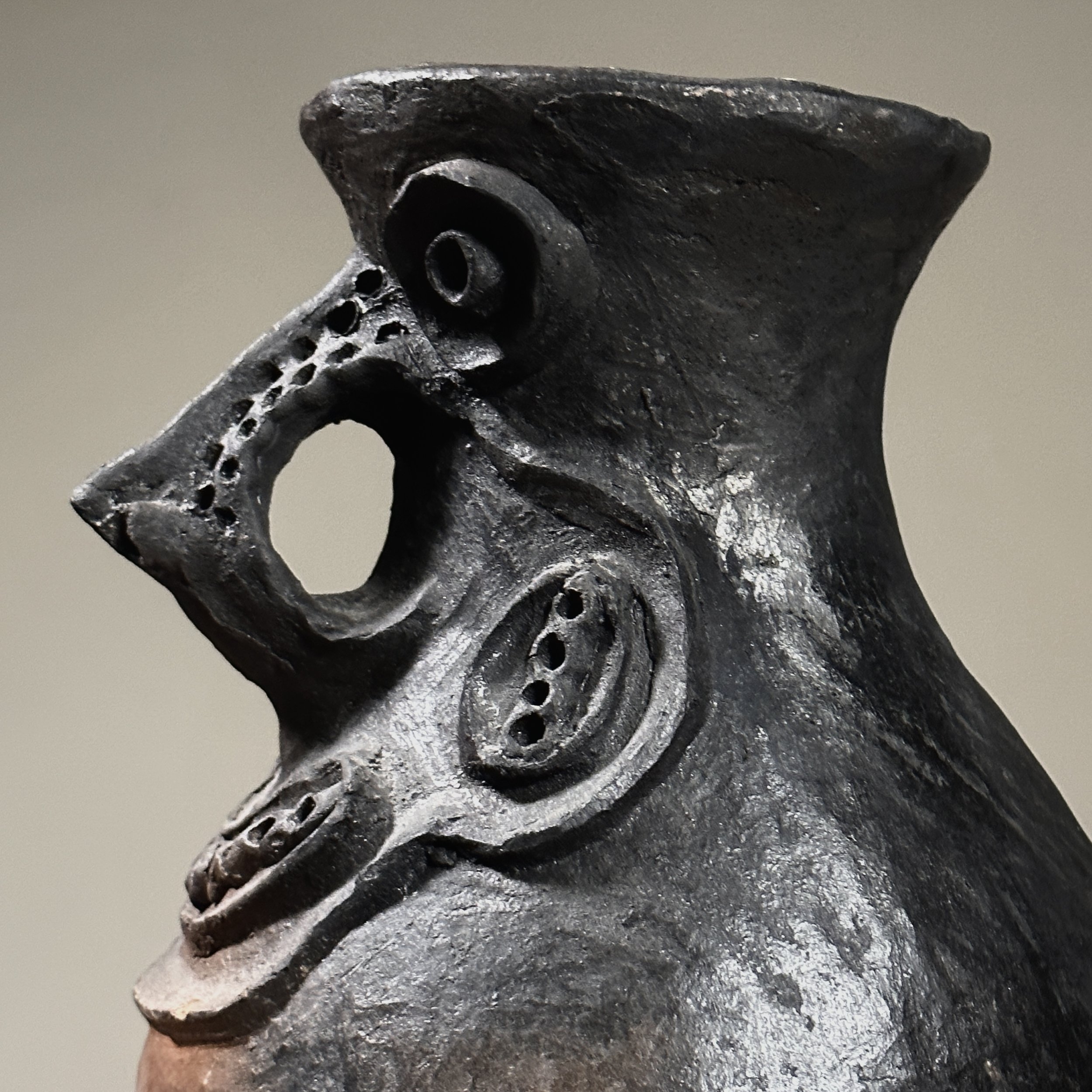 Image 7 of 8
Image 7 of 8

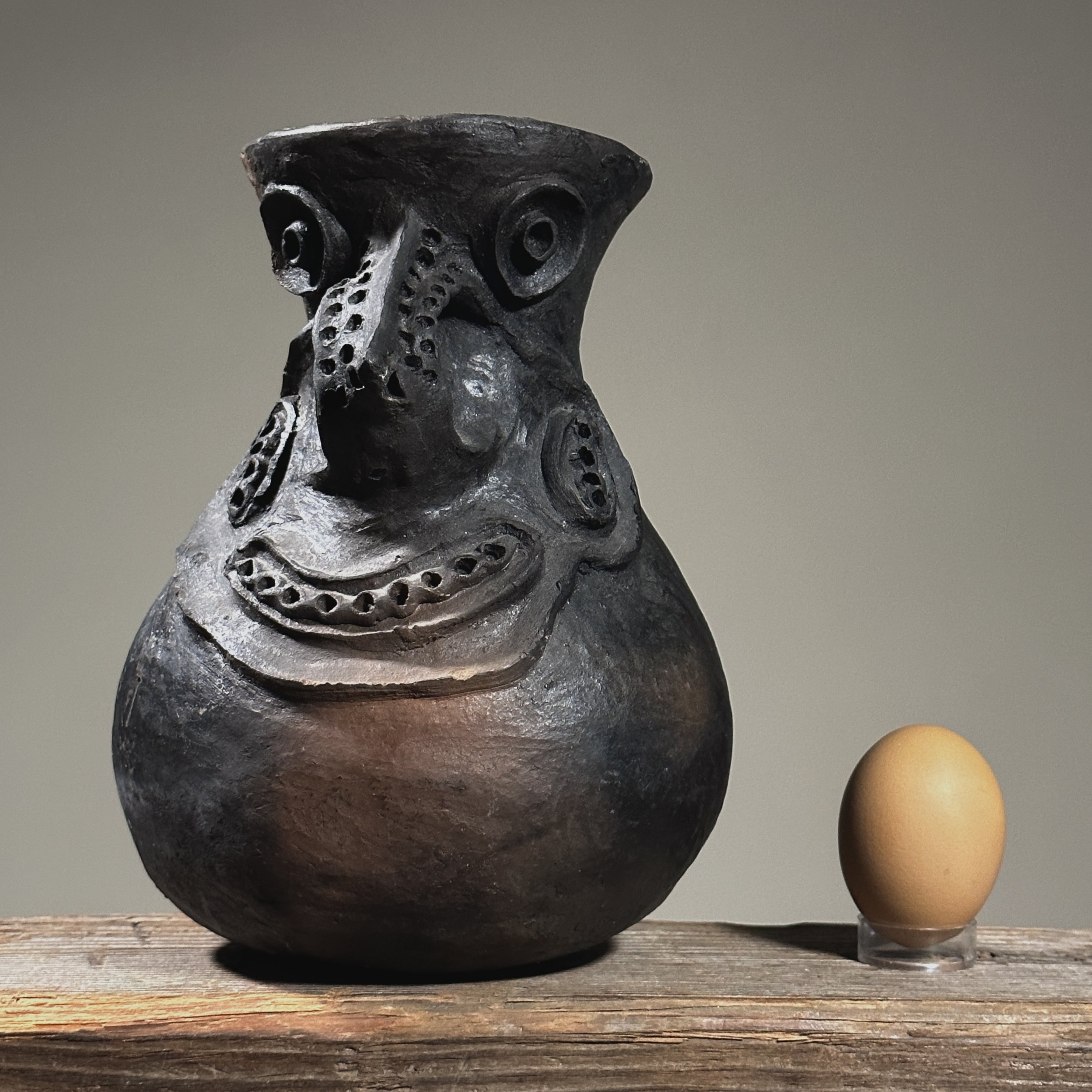 Image 8 of 8
Image 8 of 8









Vintage Anthropomorphic Chambri Wood Fired Earthenware Damarau
Vintage Anthropomorphic Chambri Wood Fired Earthenware Damarau. Wood fired clay vessel with the shape of a face adorned to the exterior of the jar. These jugs or jars were used to store smoked sago. Areas of natural clay and fire markings throughout. In good condition with wear consistent with age.
Size: 8.5”H x 8”W x 6.5”D
Chambri pottery is essential for food preparation and storage in the thatched stilt houses along the Sepik River. Although some cooking is done outside, each house has an area where clay is brought in to provide a stable, fire-proof base for a gugumbe or fire dish which is about 2-5 ft. (60-150 cm) in diameter.
Only the Iatmul speaking village of Aibom has suitable clay to make this style of pottery. The village sits inland off the middle Sepik River in the Chambri Lakes. Women collect clay from pits at the foot of Aibom Mountain behind the village.
In addition to fireplaces, Aibom women make sago storage jars and other smaller pieces. Most women make pots of all types during the wet season. If they marry outside the village they lose their access to the clay pits, but they can still make pots.
A potter starts with a double thickness pinch pot and adds coils to build up the form. The coils are smoothed to complete the pot. The pots are dried to the leather-hard stage under the stilt houses, a slow process in the tropics.
Decoration is added, sometimes with filets or with finely detailed clay slip designs using natural earth colors of red, black and white. The men traditionally shape the faces and figures on the ridge tiles, sago and ceremonial pots. Men also do the painting. Recently some women are doing this, especially on the smaller pots made for outside sales.
Firing is done before a big market day. The pots are set out in the sun to finish drying, then fired by heaping dried sago palm fronds over the mounded pottery. The firing takes from 30-60 minutes. The pots are properly fired when they turn orange. This produces a very low fire pottery.
Chambri pottery is traditionally traded, along with dried fish from the Lakes, for Sepik River sago flour and betel nut, as well as April River grass skirts. The Maringei people, who live close to the small channel into the Lakes, are the middlemen. Traders from Tambanum Village, who also trade other pots from other areas, take the pottery as far north as the April River and south to the Murik Lakes near where the Sepik empties out into the sea.
(Source: art-pacific.com)
Vintage Anthropomorphic Chambri Wood Fired Earthenware Damarau. Wood fired clay vessel with the shape of a face adorned to the exterior of the jar. These jugs or jars were used to store smoked sago. Areas of natural clay and fire markings throughout. In good condition with wear consistent with age.
Size: 8.5”H x 8”W x 6.5”D
Chambri pottery is essential for food preparation and storage in the thatched stilt houses along the Sepik River. Although some cooking is done outside, each house has an area where clay is brought in to provide a stable, fire-proof base for a gugumbe or fire dish which is about 2-5 ft. (60-150 cm) in diameter.
Only the Iatmul speaking village of Aibom has suitable clay to make this style of pottery. The village sits inland off the middle Sepik River in the Chambri Lakes. Women collect clay from pits at the foot of Aibom Mountain behind the village.
In addition to fireplaces, Aibom women make sago storage jars and other smaller pieces. Most women make pots of all types during the wet season. If they marry outside the village they lose their access to the clay pits, but they can still make pots.
A potter starts with a double thickness pinch pot and adds coils to build up the form. The coils are smoothed to complete the pot. The pots are dried to the leather-hard stage under the stilt houses, a slow process in the tropics.
Decoration is added, sometimes with filets or with finely detailed clay slip designs using natural earth colors of red, black and white. The men traditionally shape the faces and figures on the ridge tiles, sago and ceremonial pots. Men also do the painting. Recently some women are doing this, especially on the smaller pots made for outside sales.
Firing is done before a big market day. The pots are set out in the sun to finish drying, then fired by heaping dried sago palm fronds over the mounded pottery. The firing takes from 30-60 minutes. The pots are properly fired when they turn orange. This produces a very low fire pottery.
Chambri pottery is traditionally traded, along with dried fish from the Lakes, for Sepik River sago flour and betel nut, as well as April River grass skirts. The Maringei people, who live close to the small channel into the Lakes, are the middlemen. Traders from Tambanum Village, who also trade other pots from other areas, take the pottery as far north as the April River and south to the Murik Lakes near where the Sepik empties out into the sea.
(Source: art-pacific.com)

